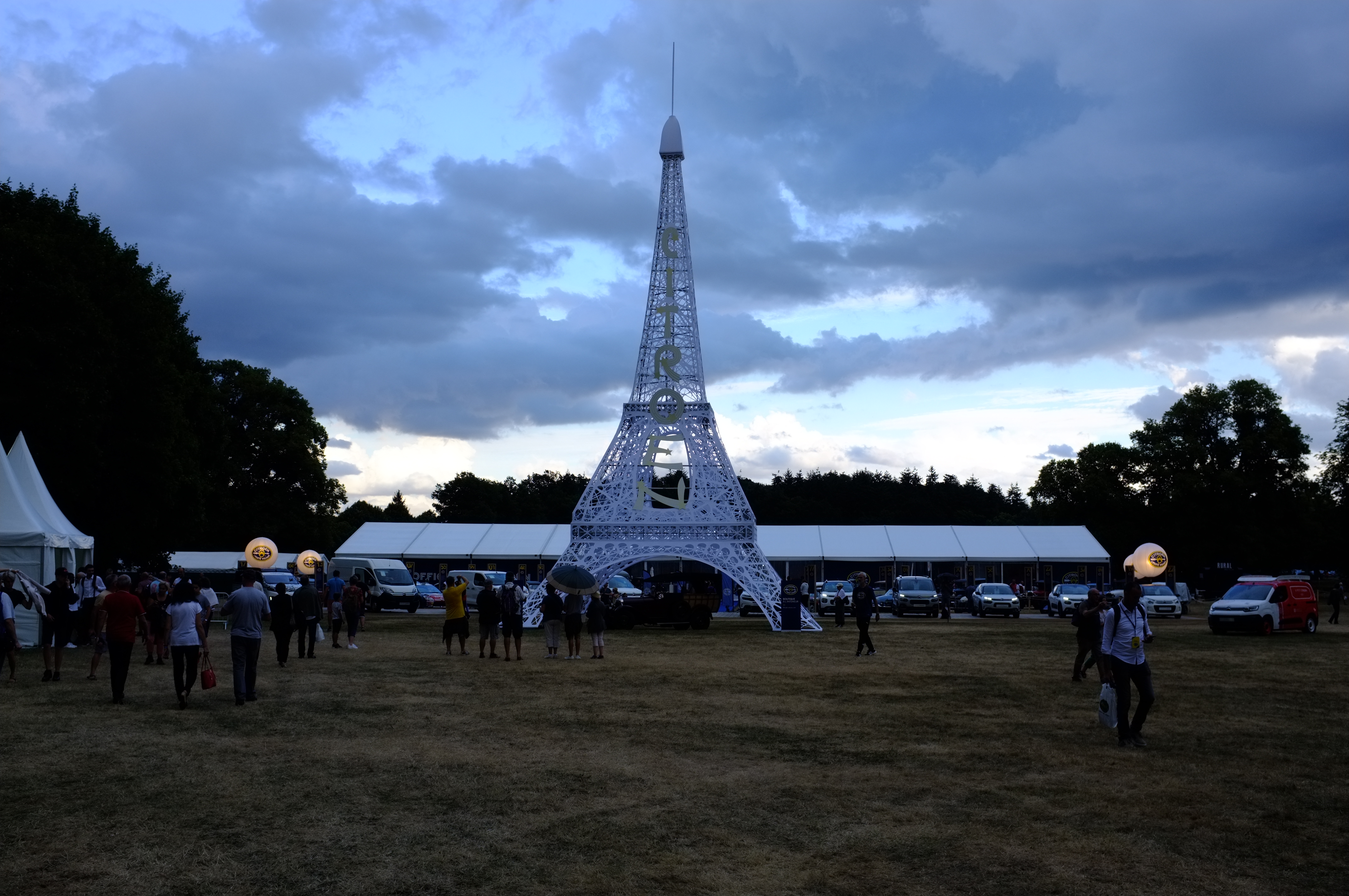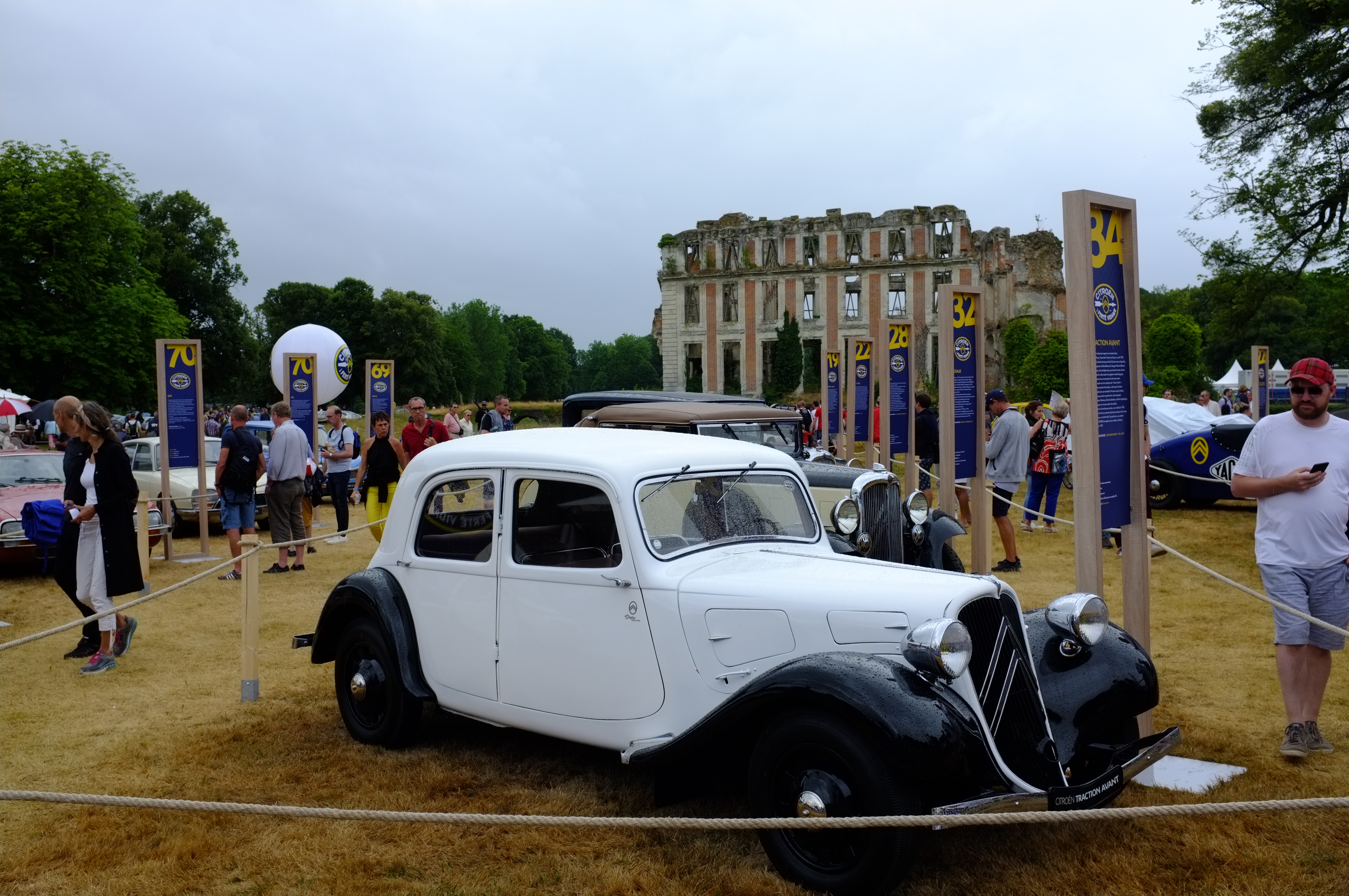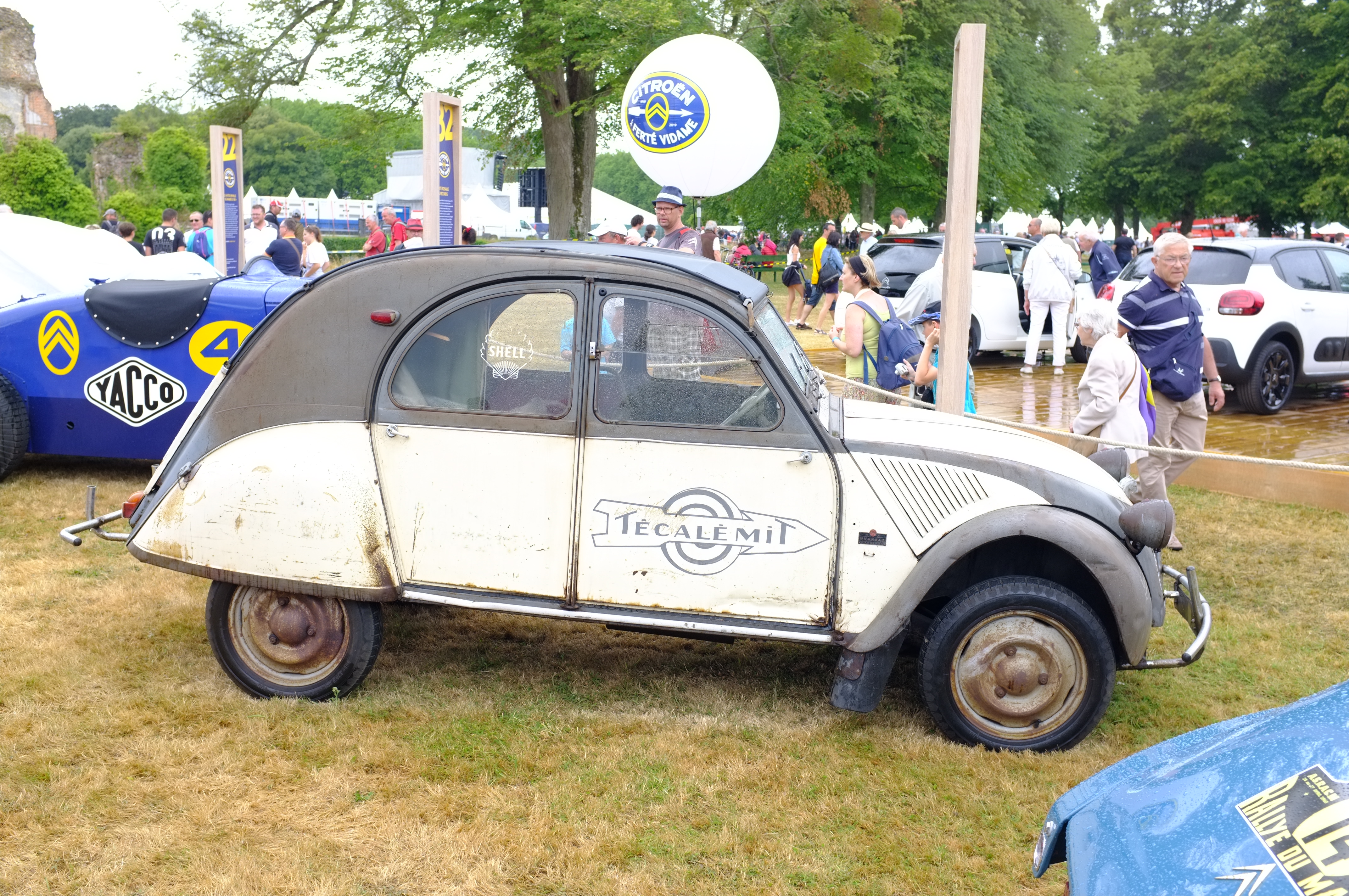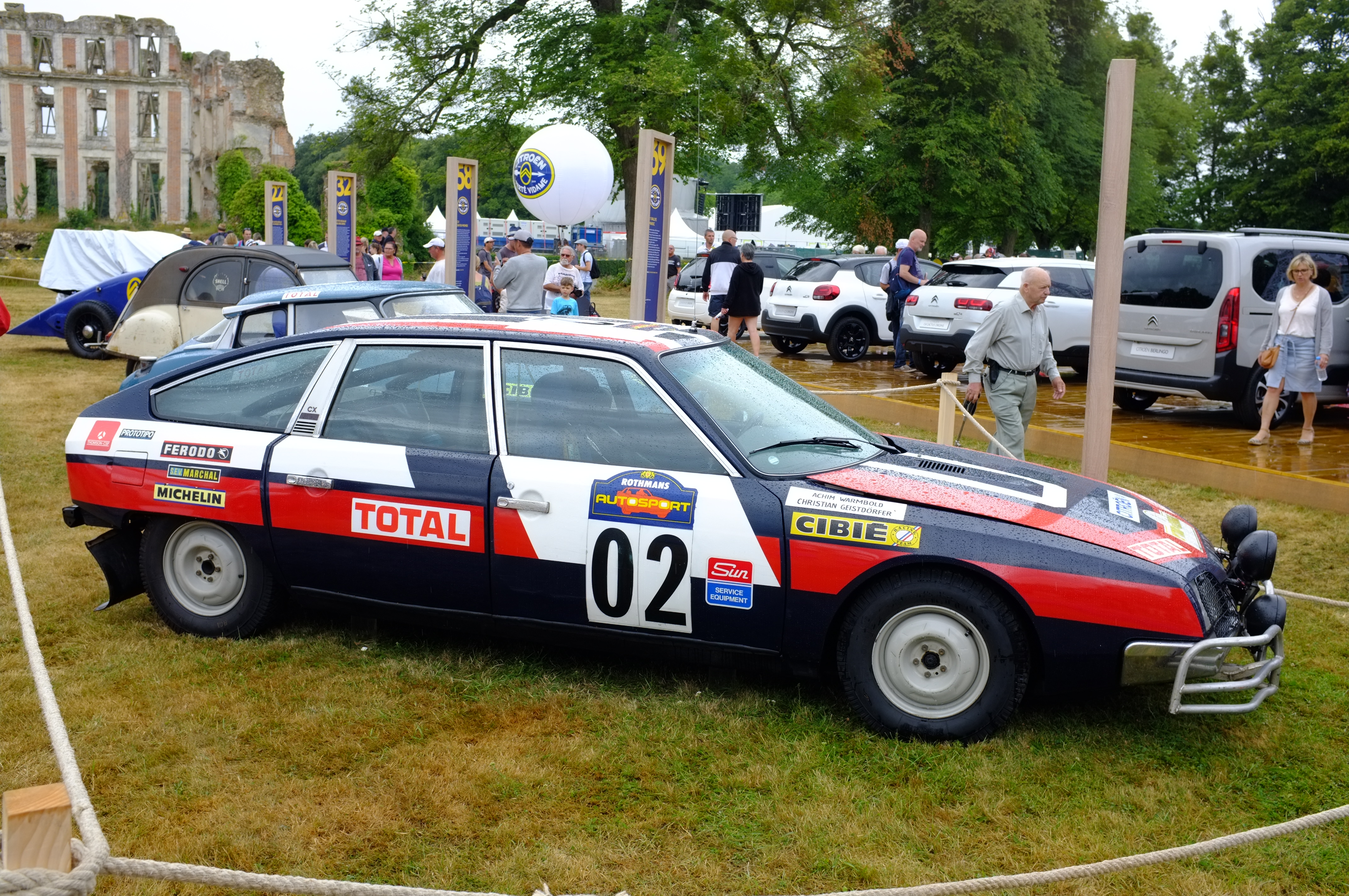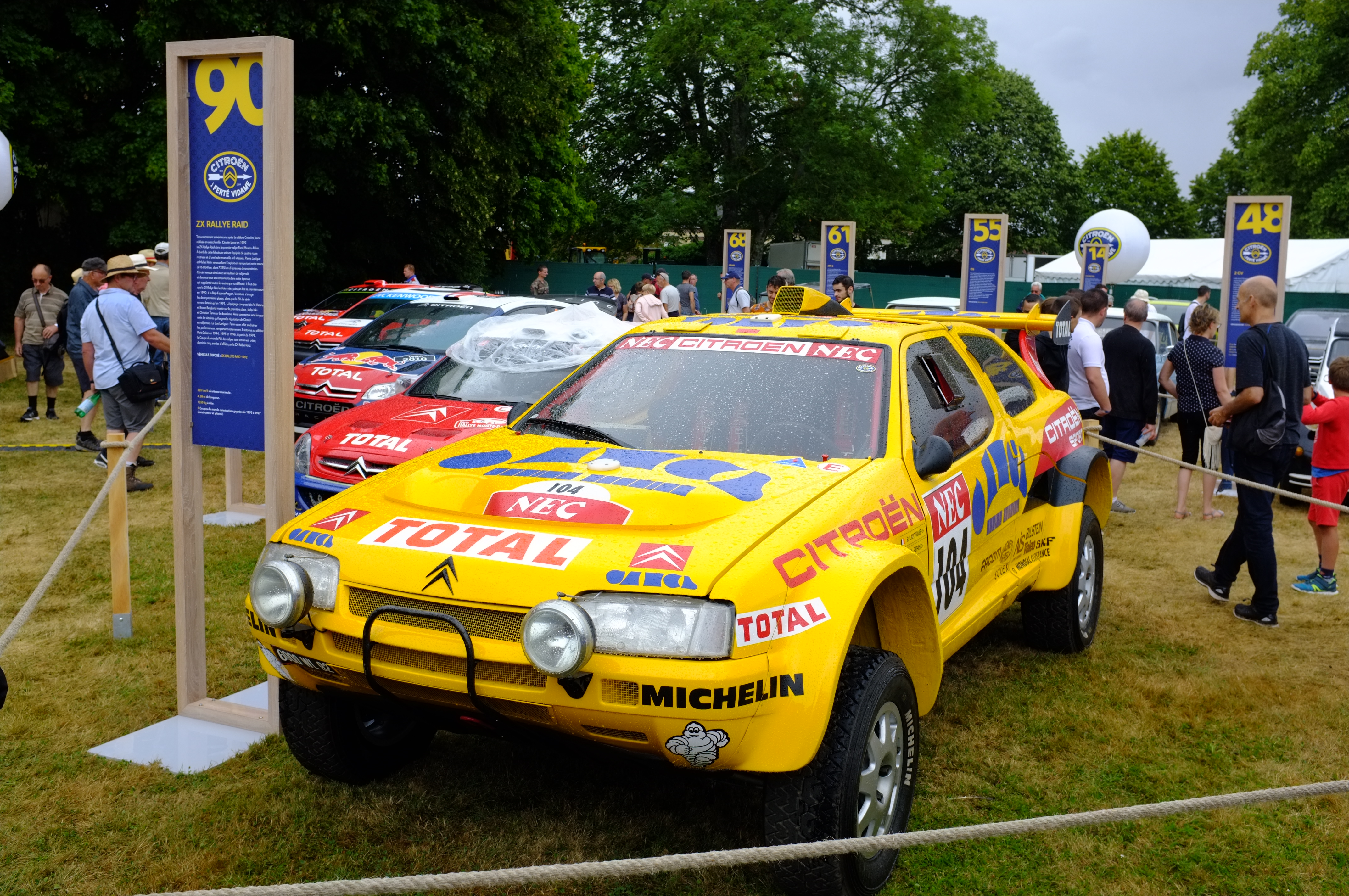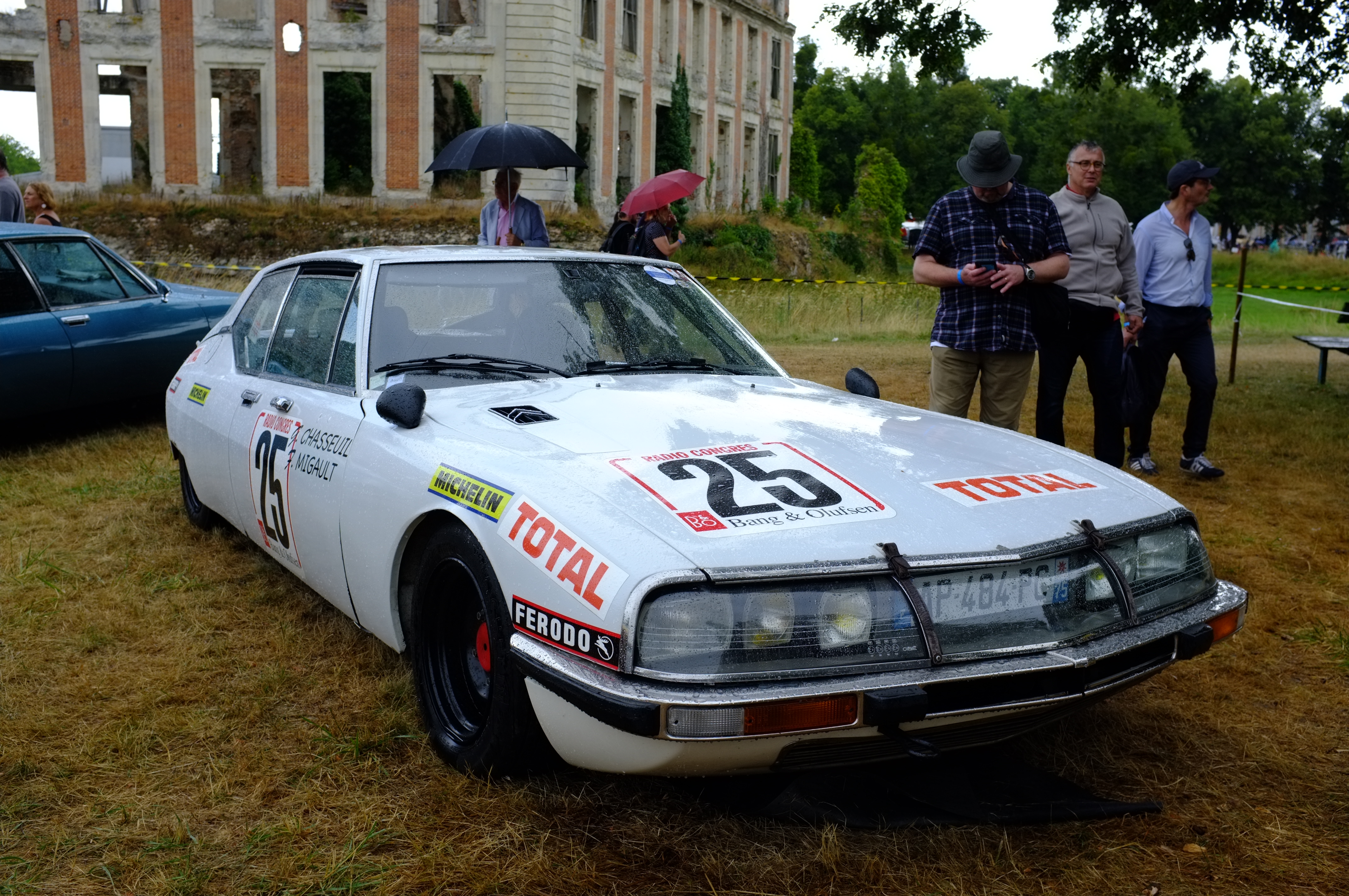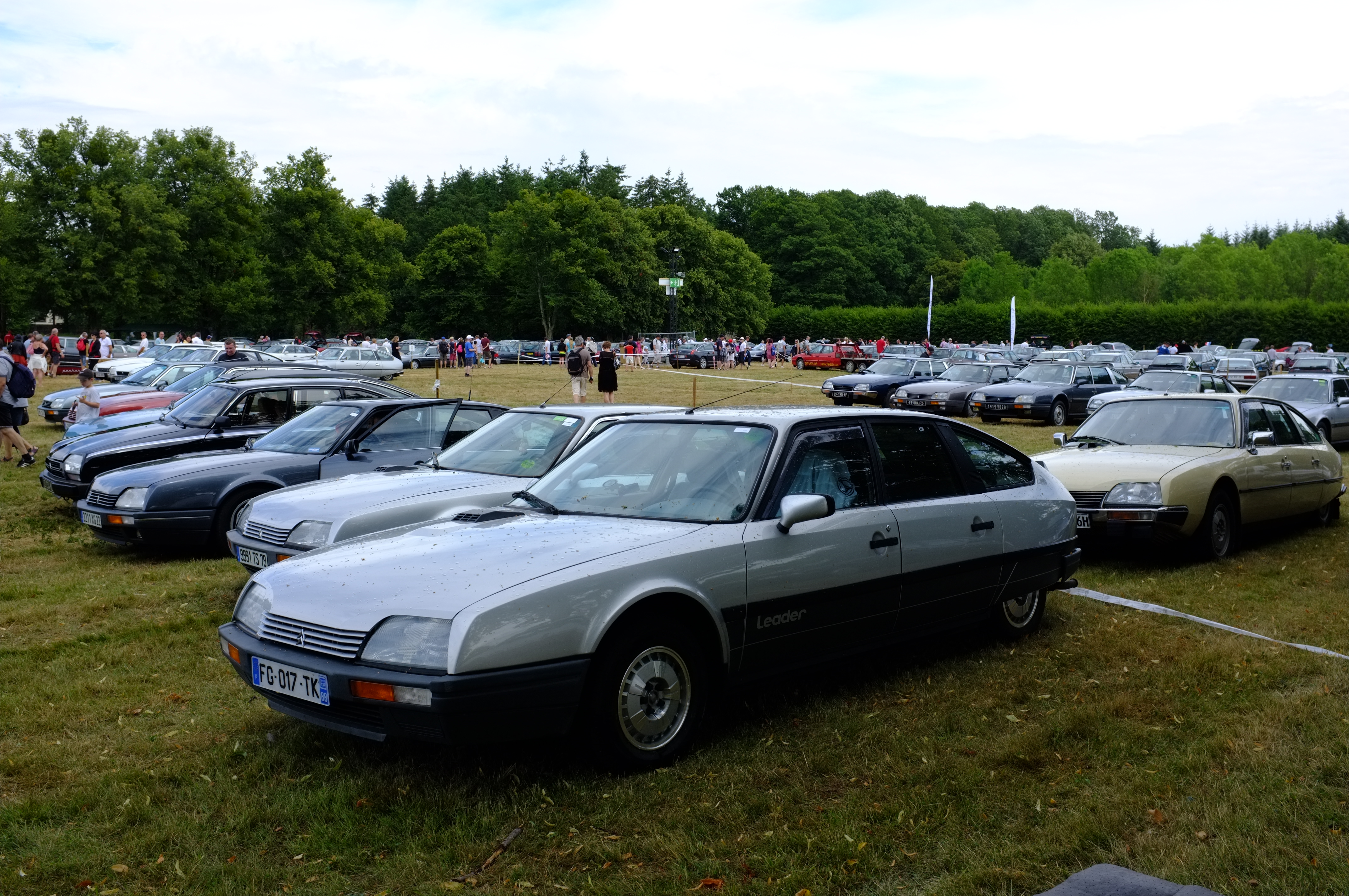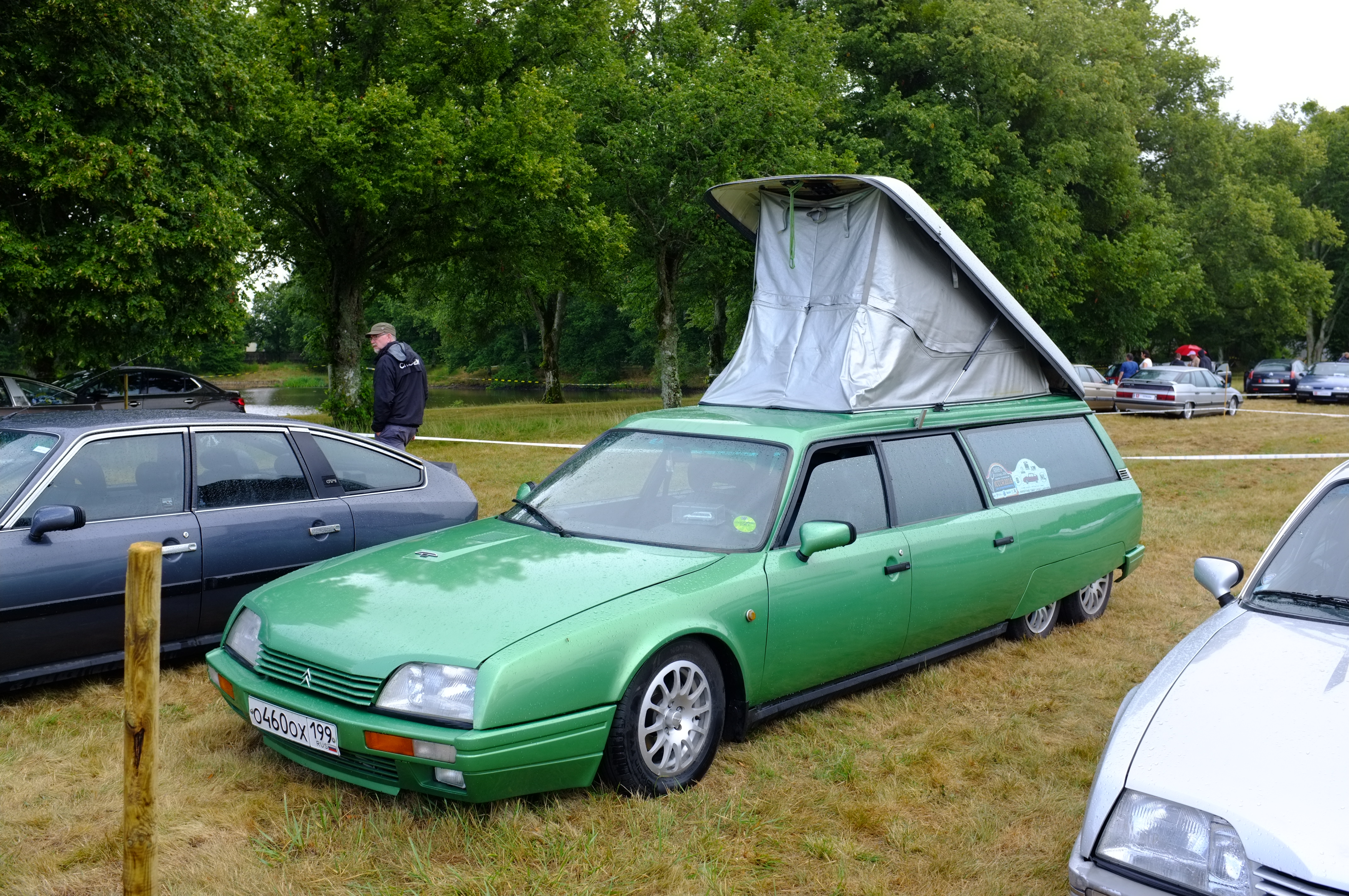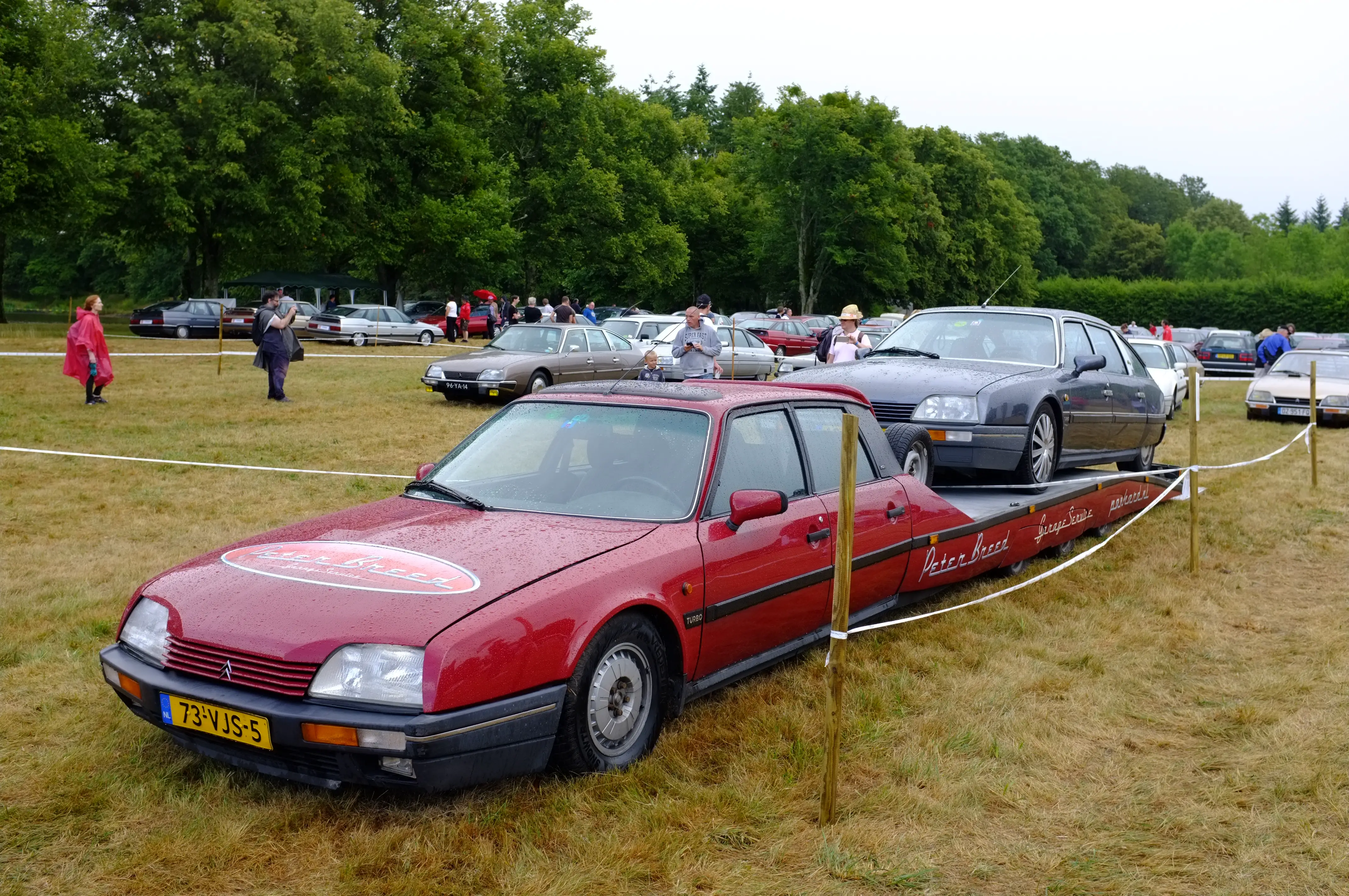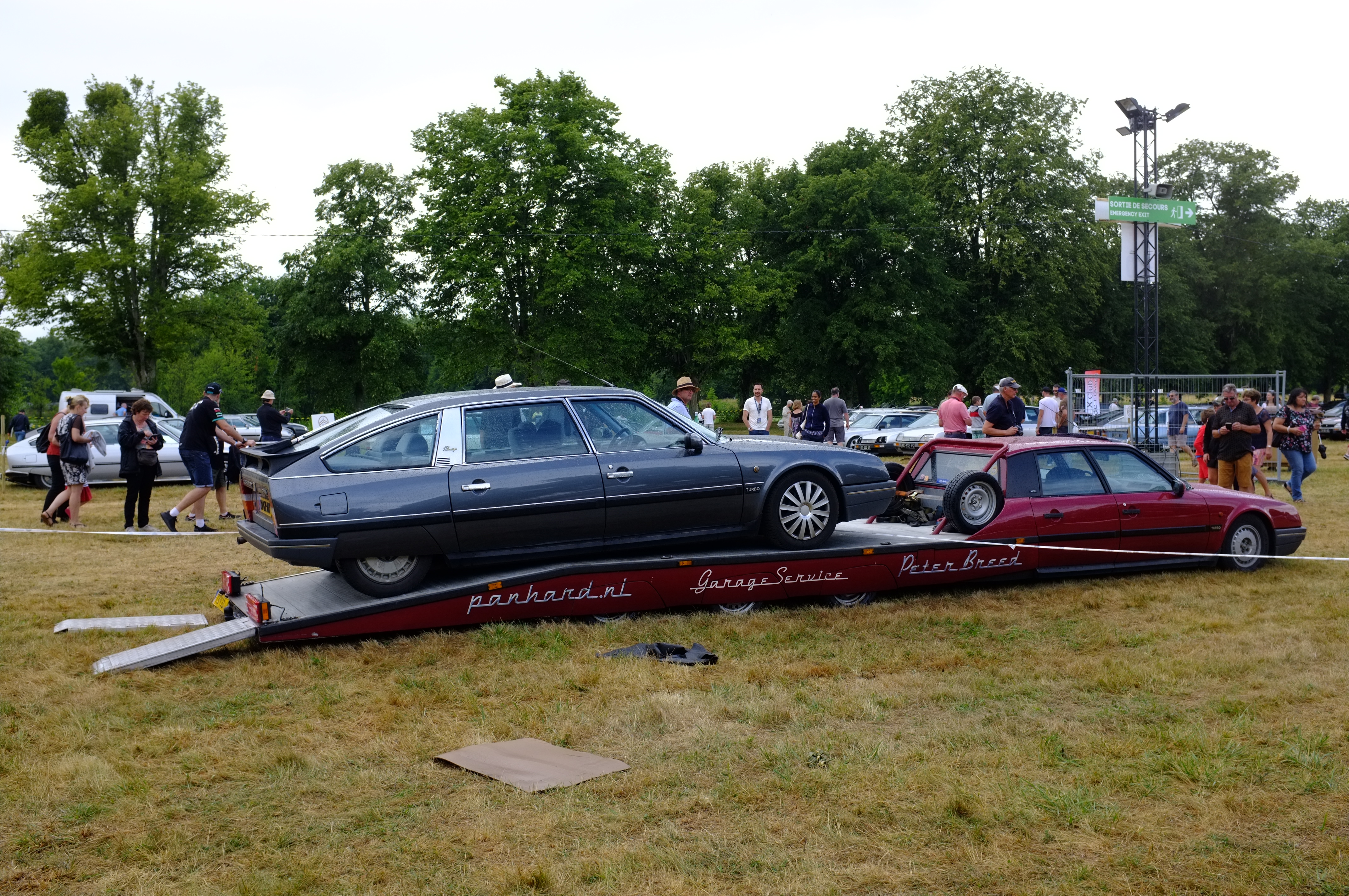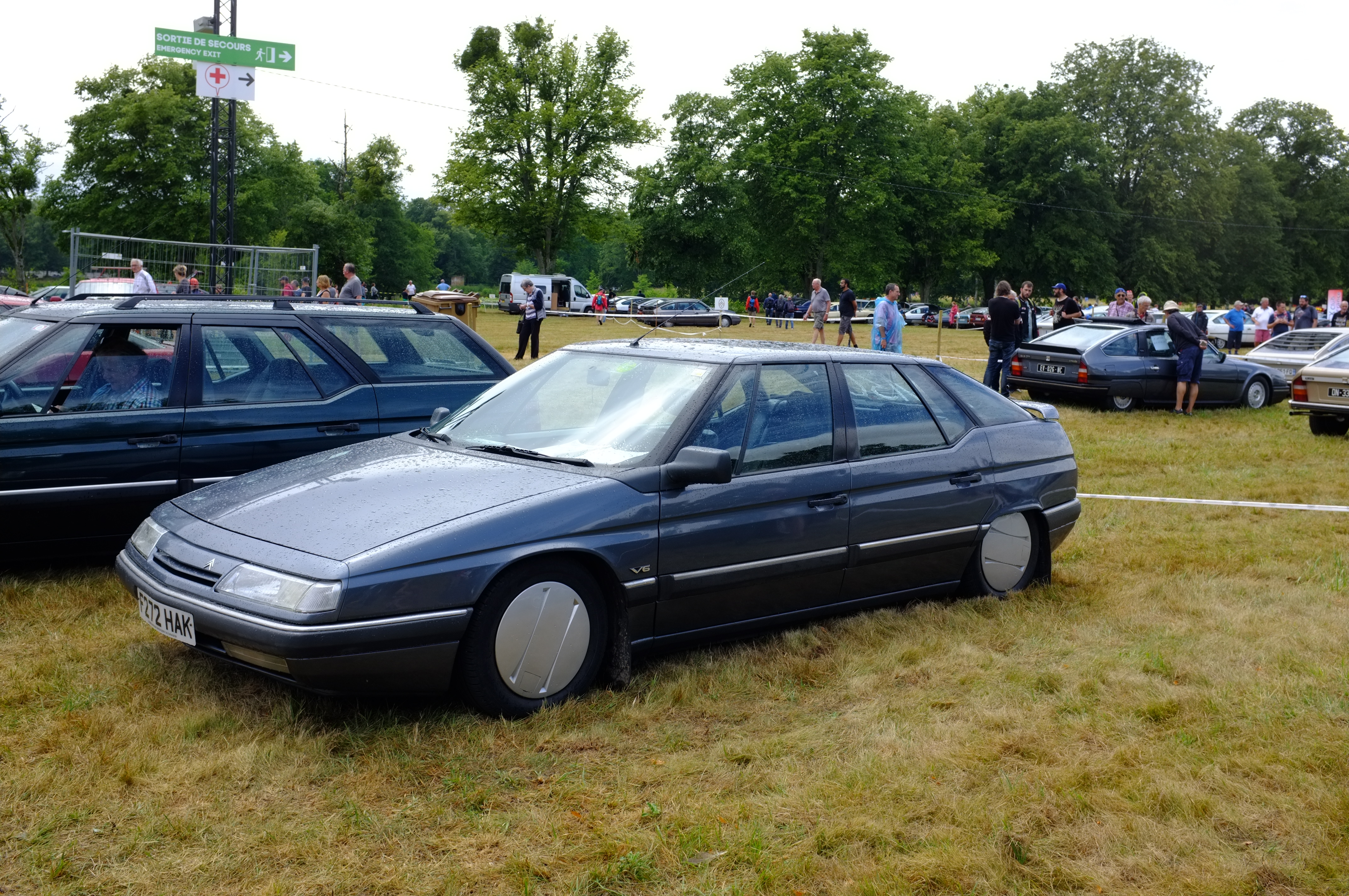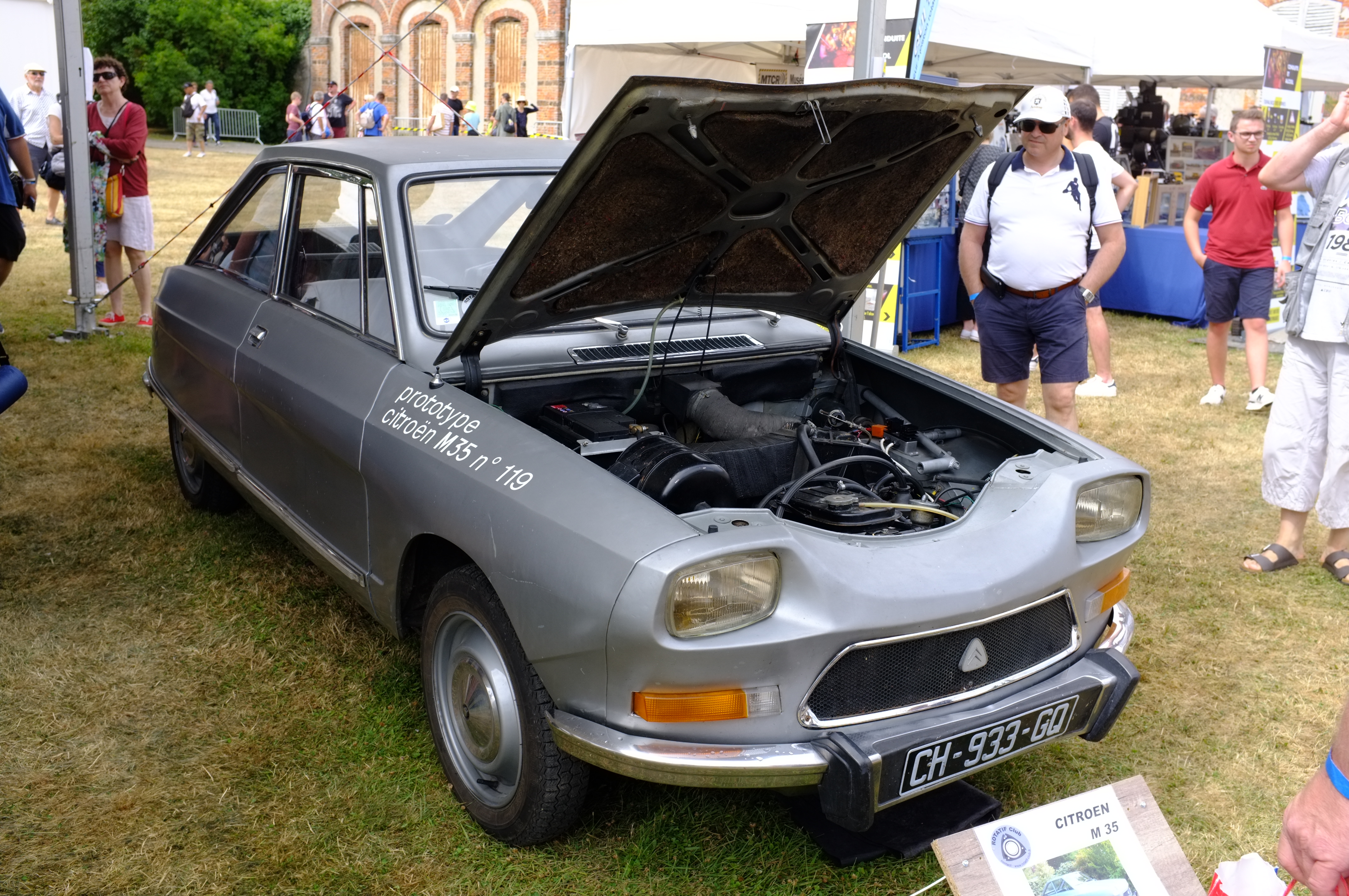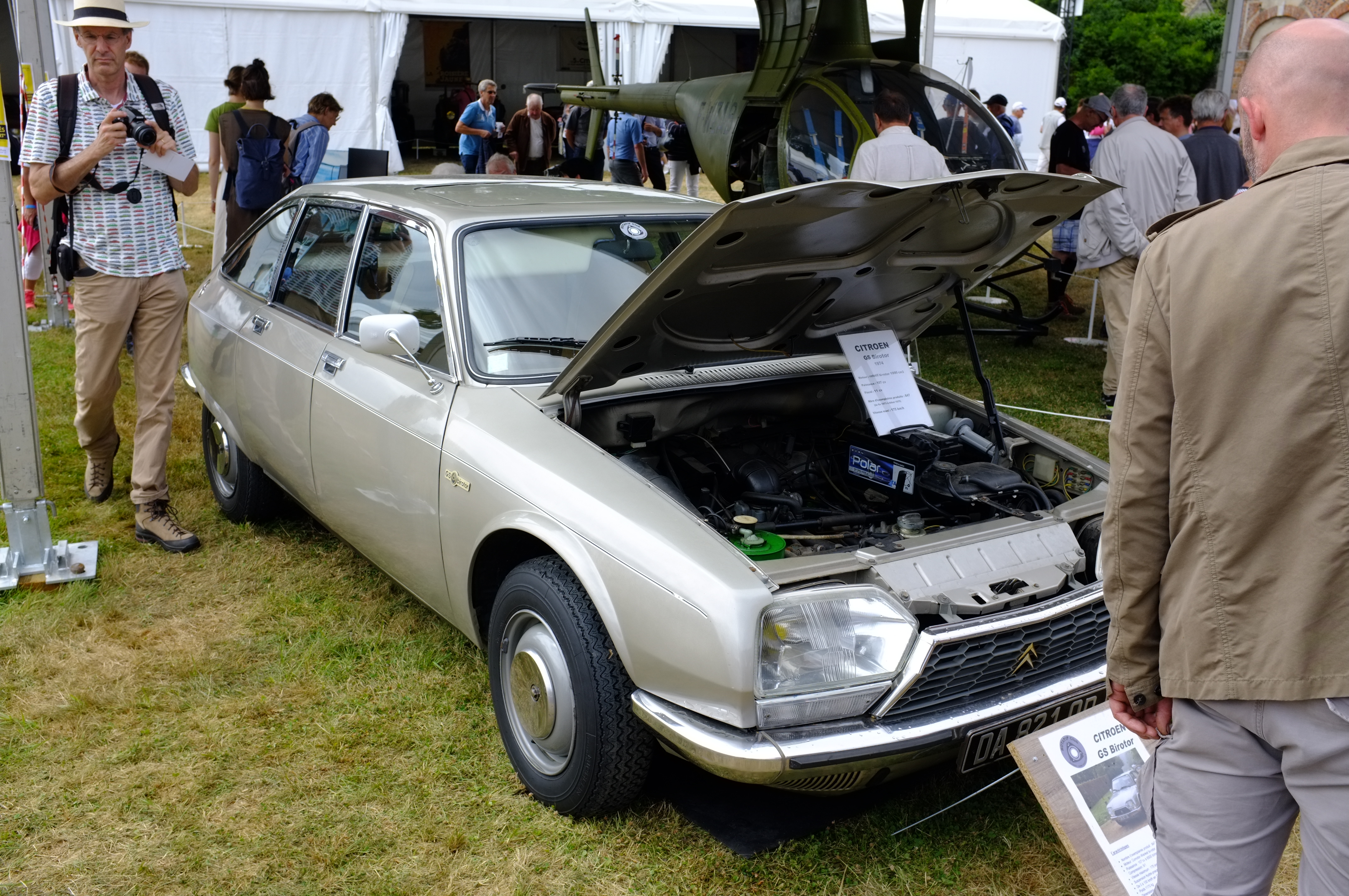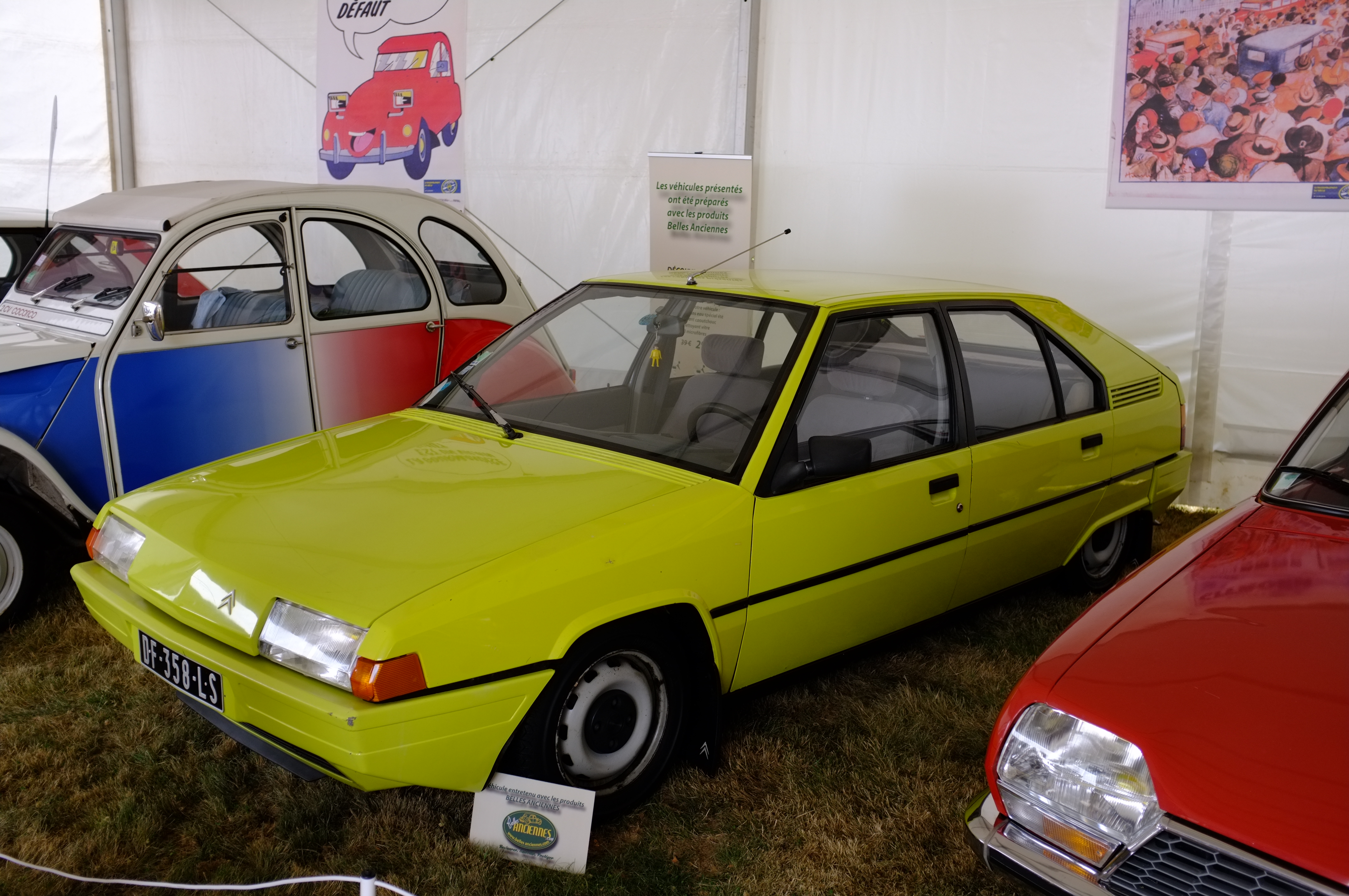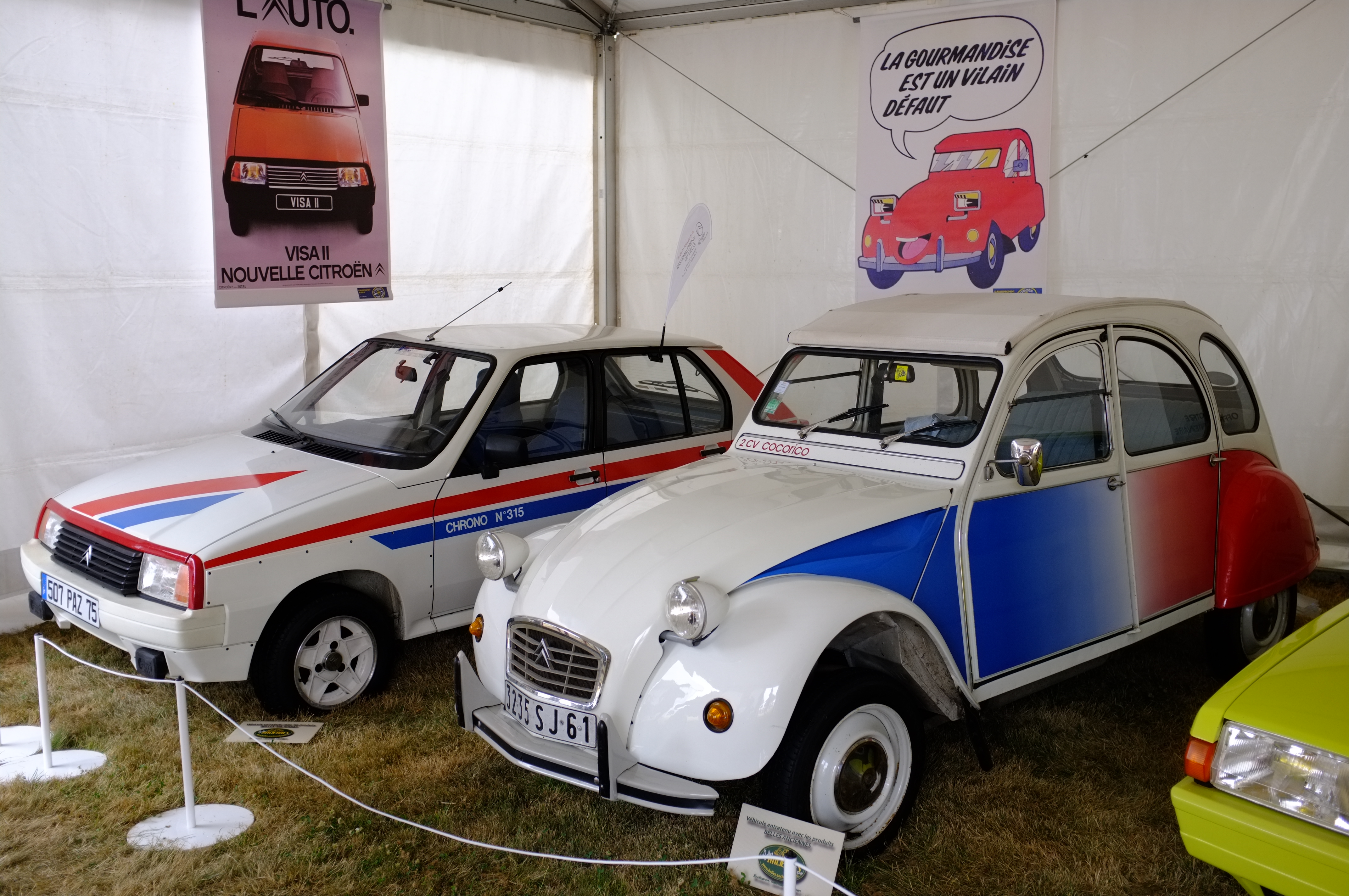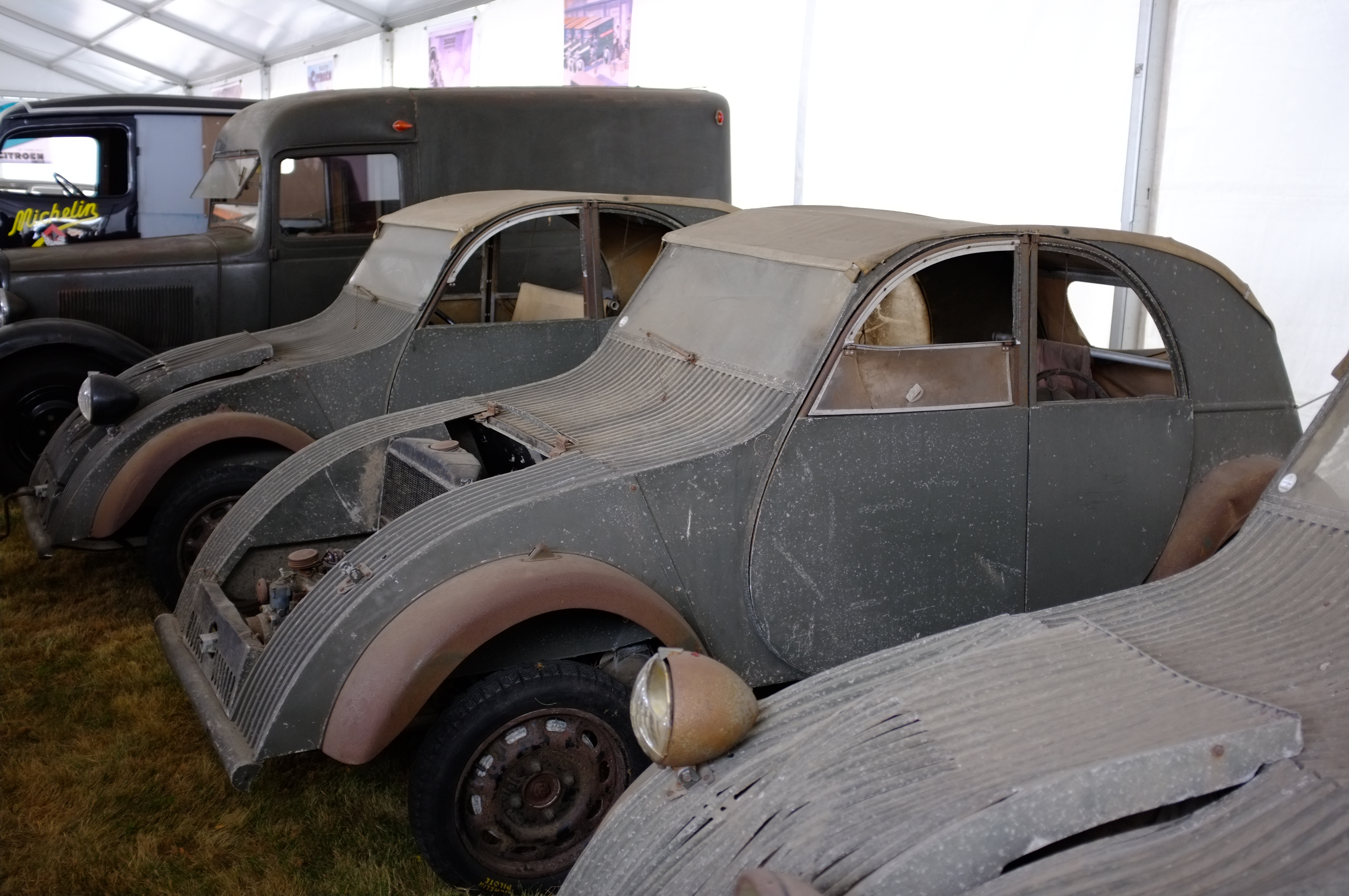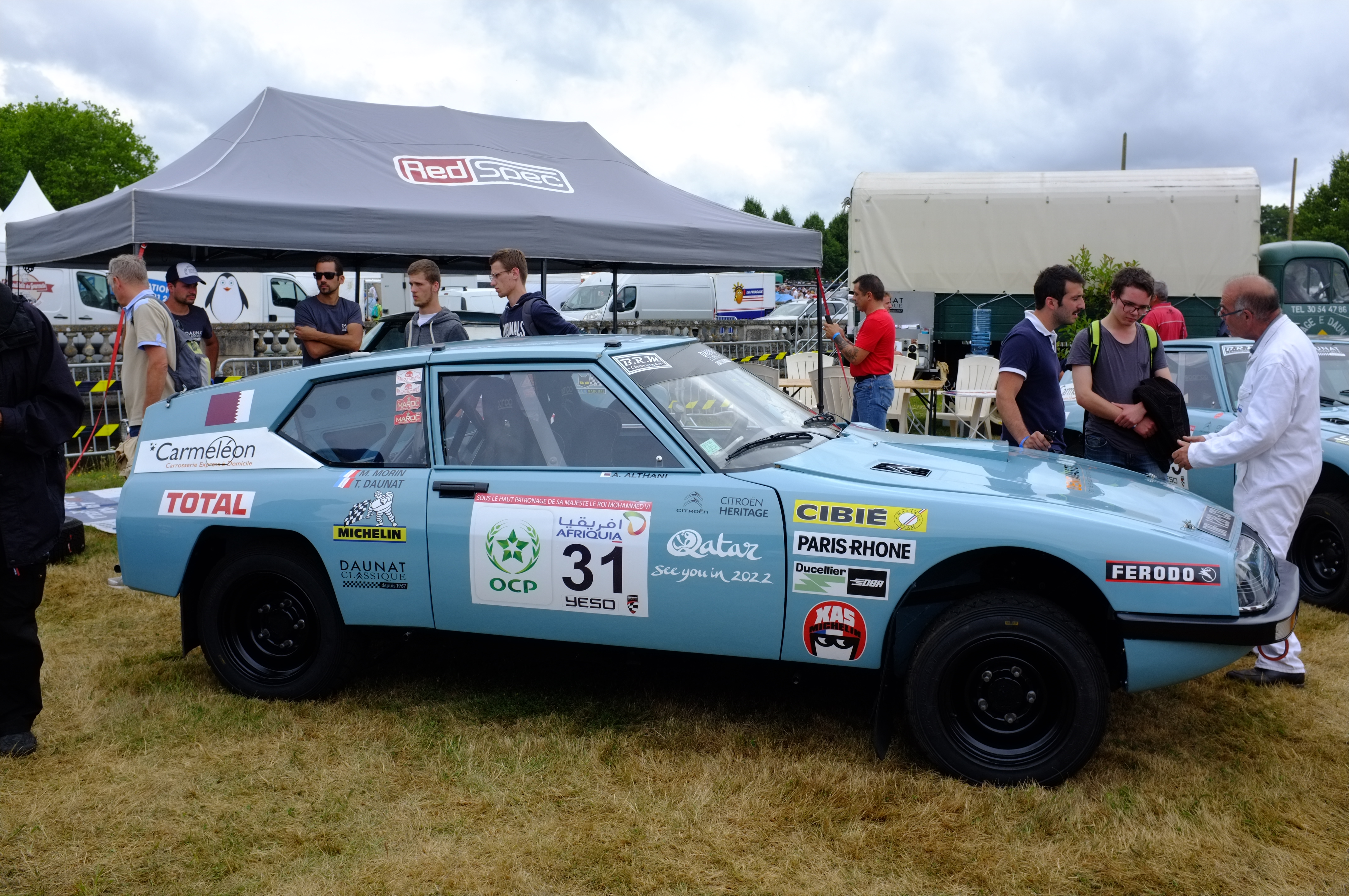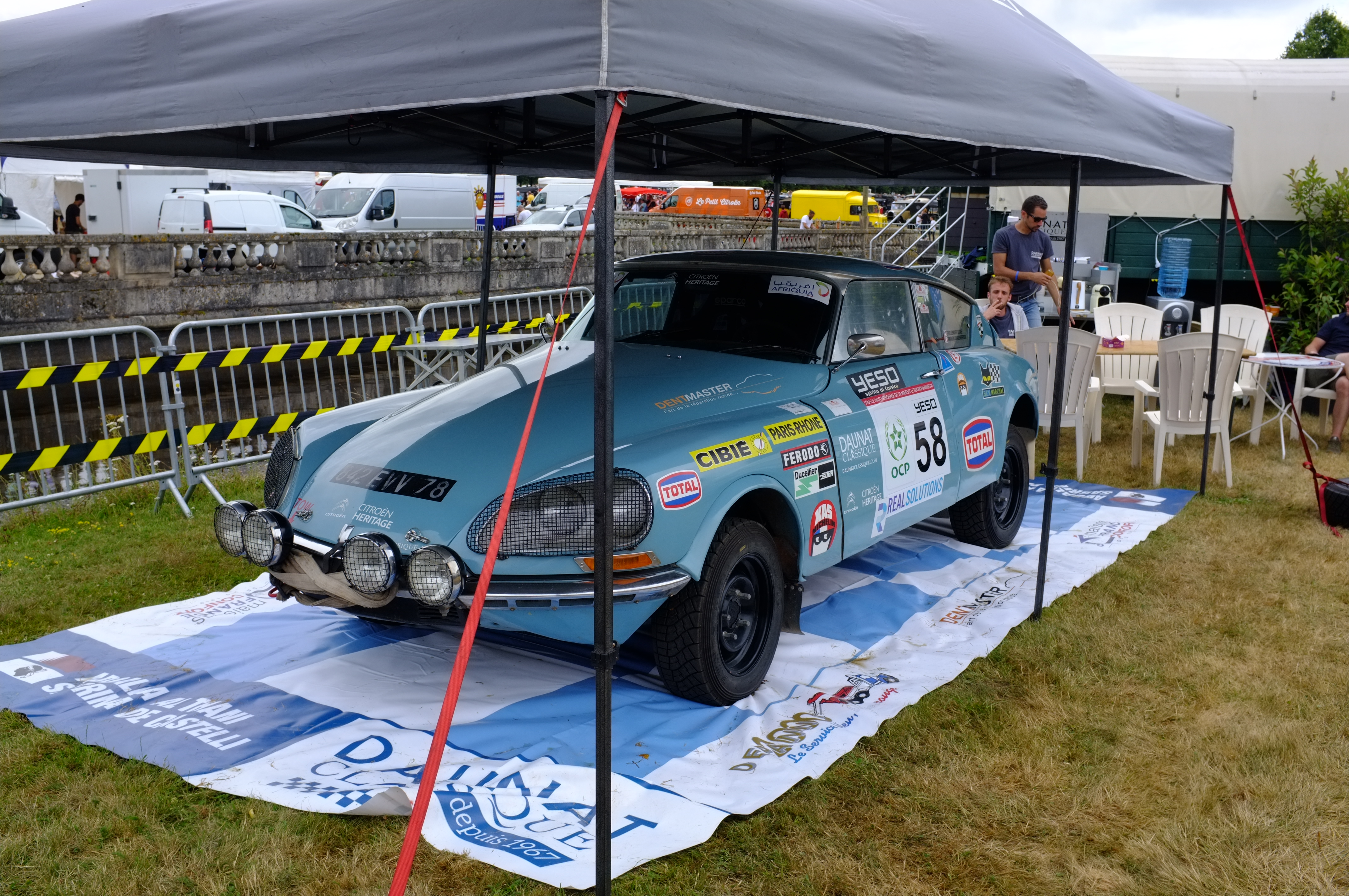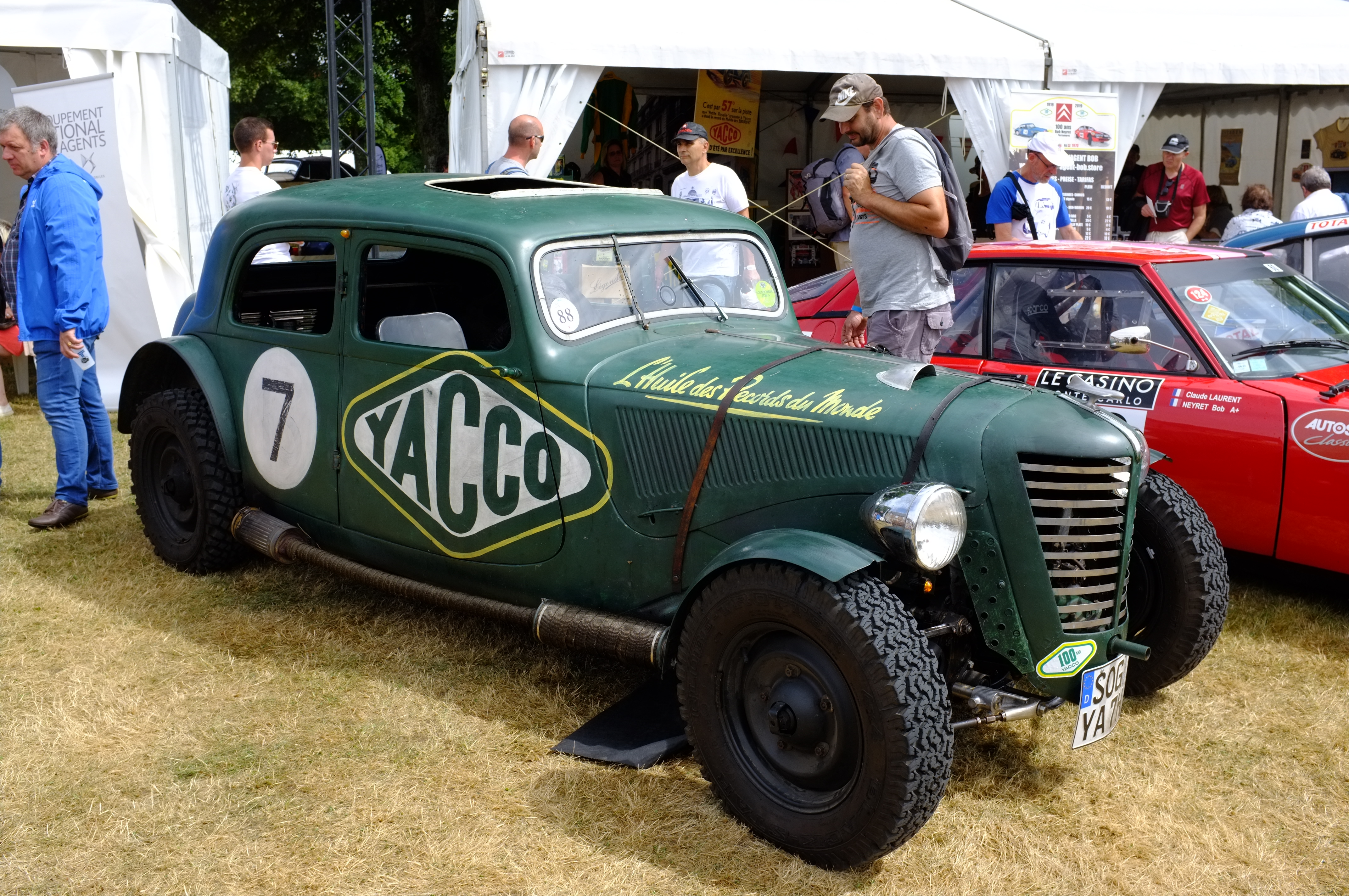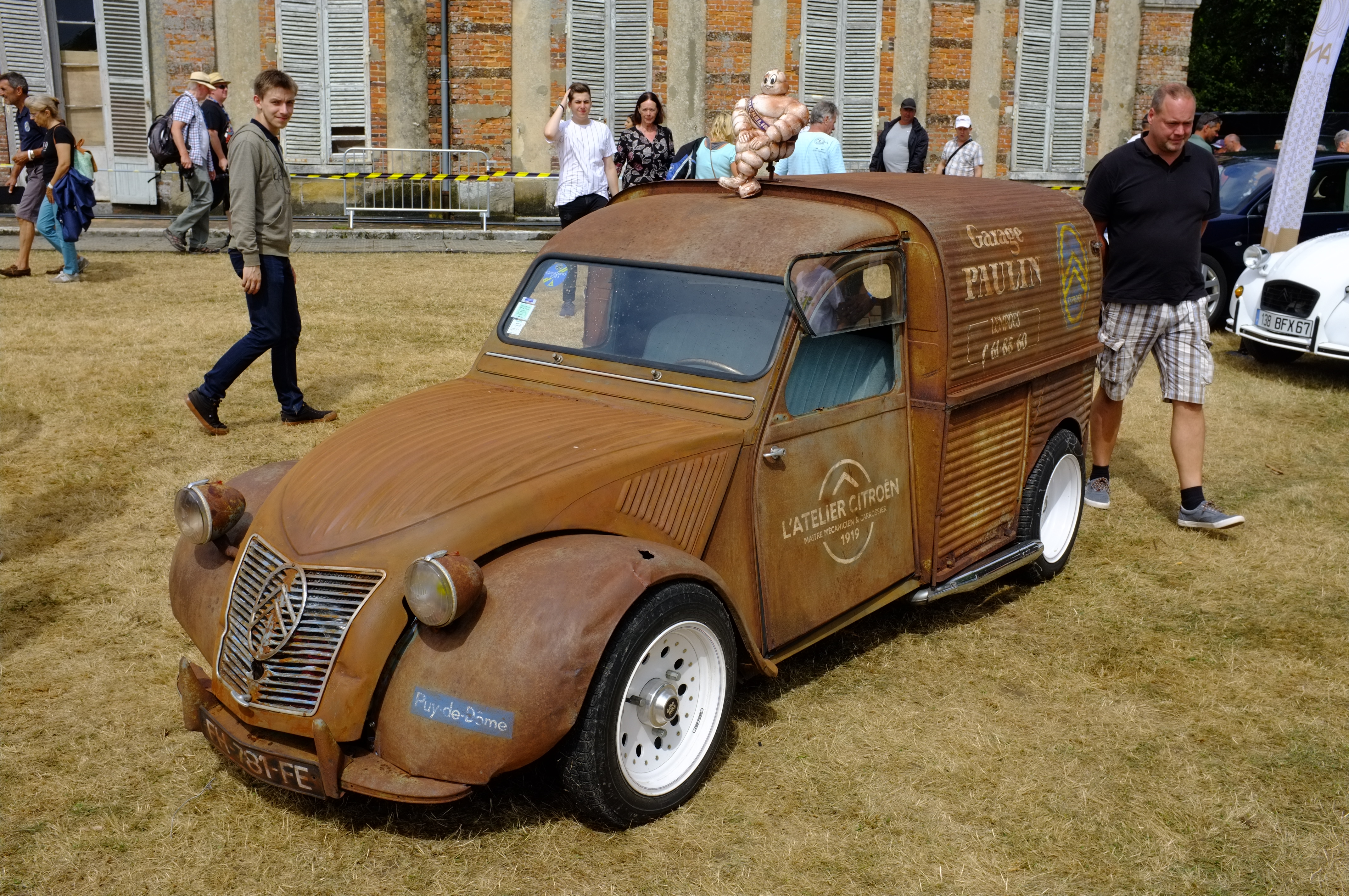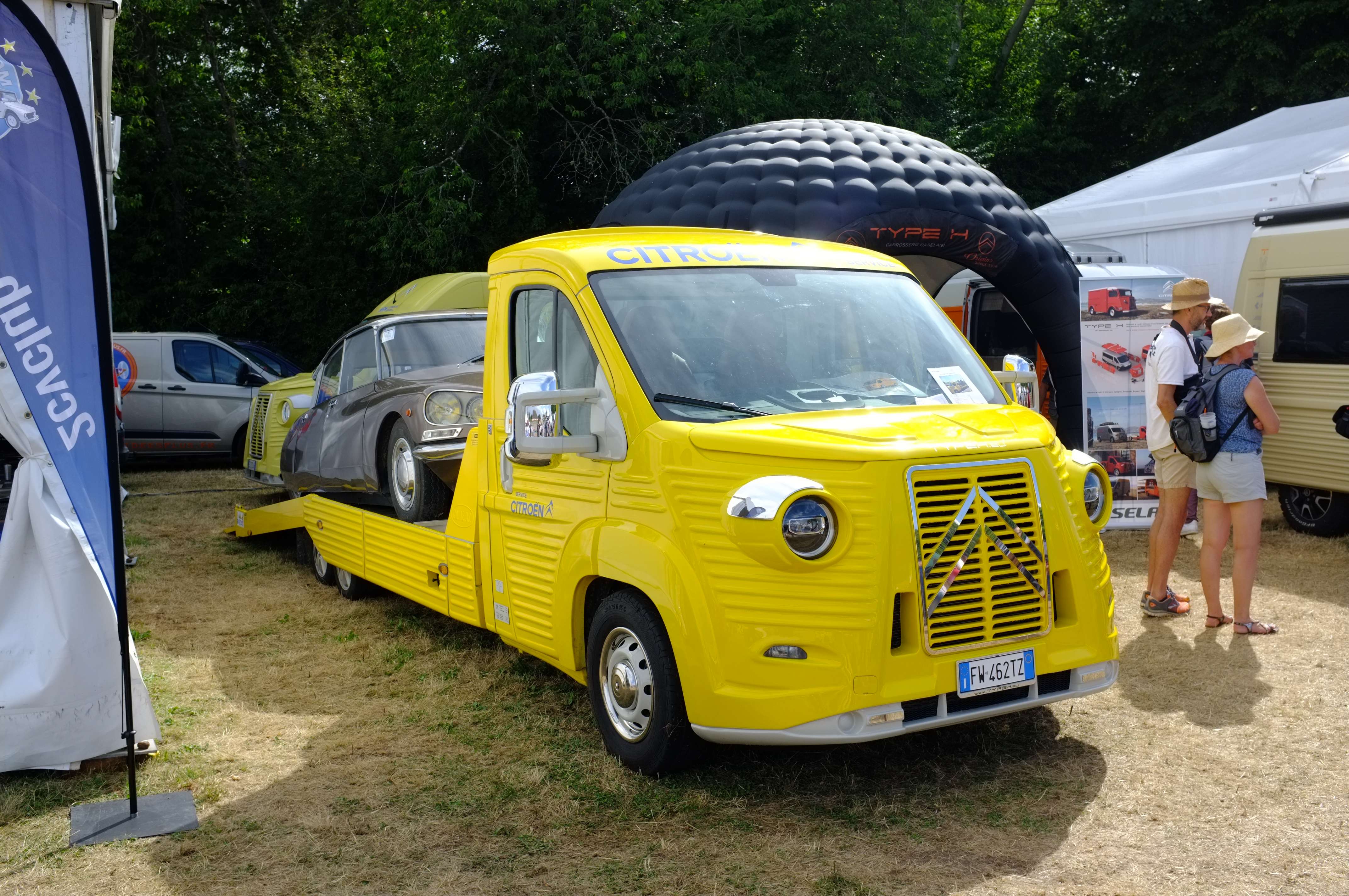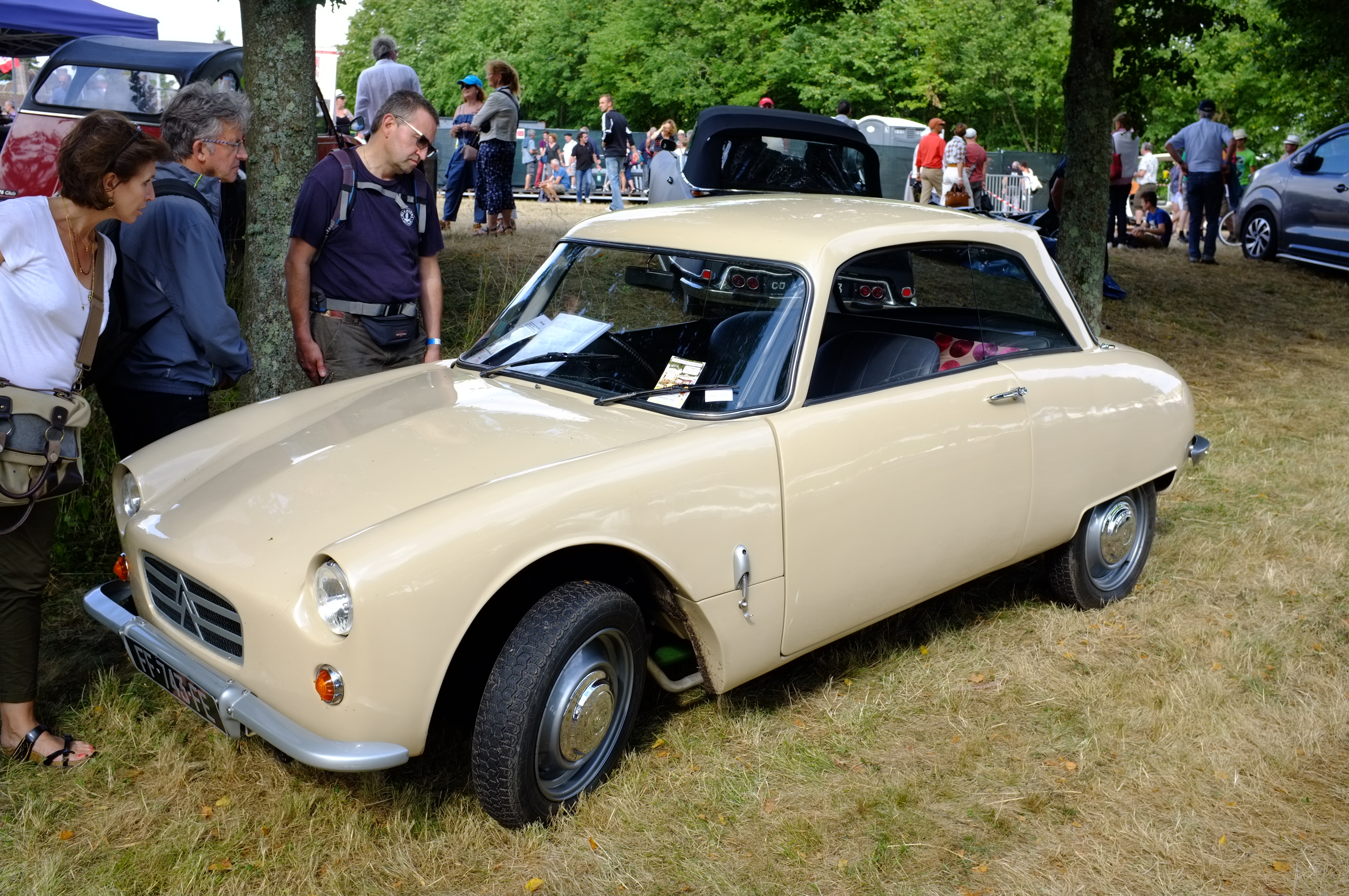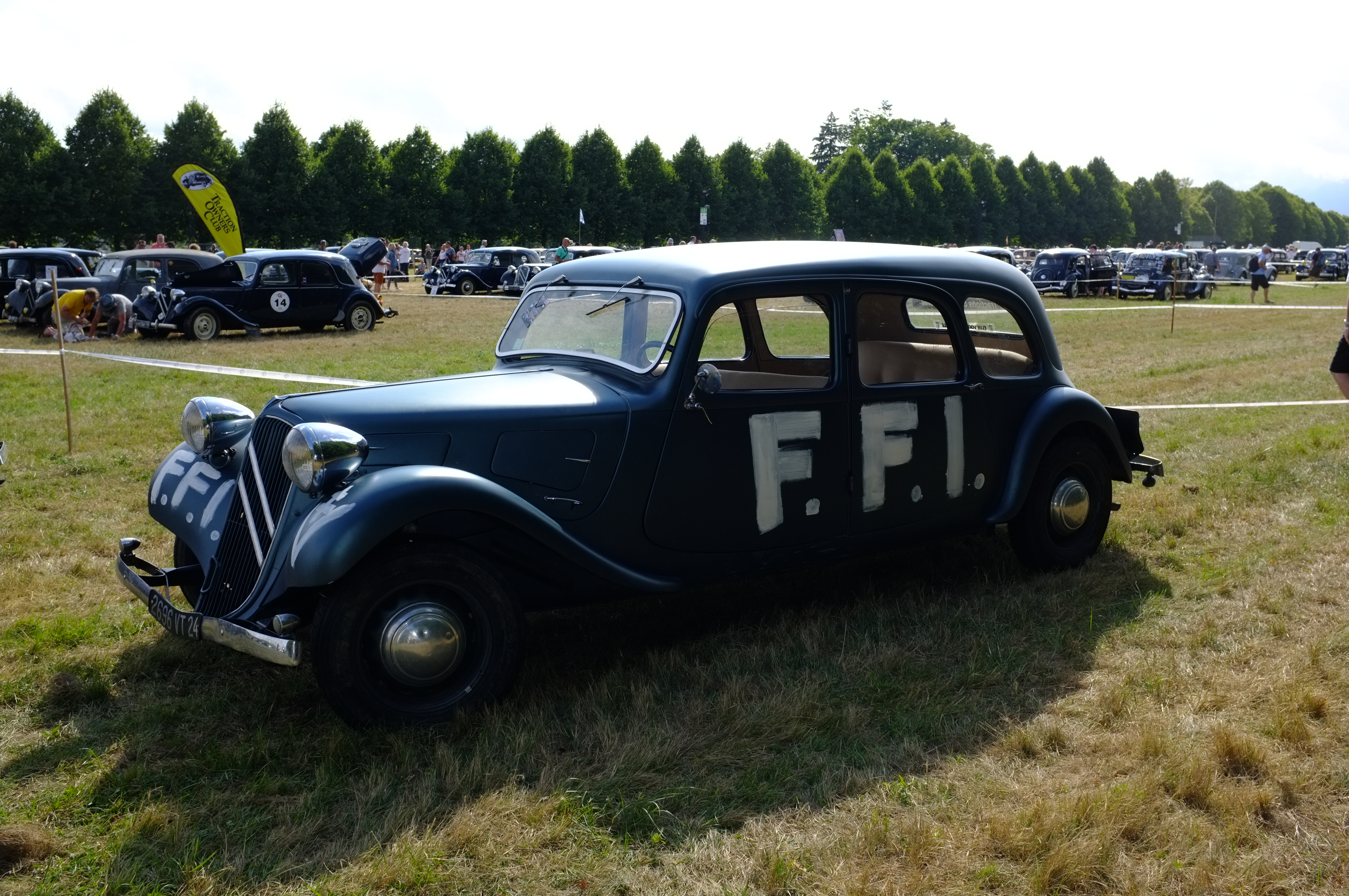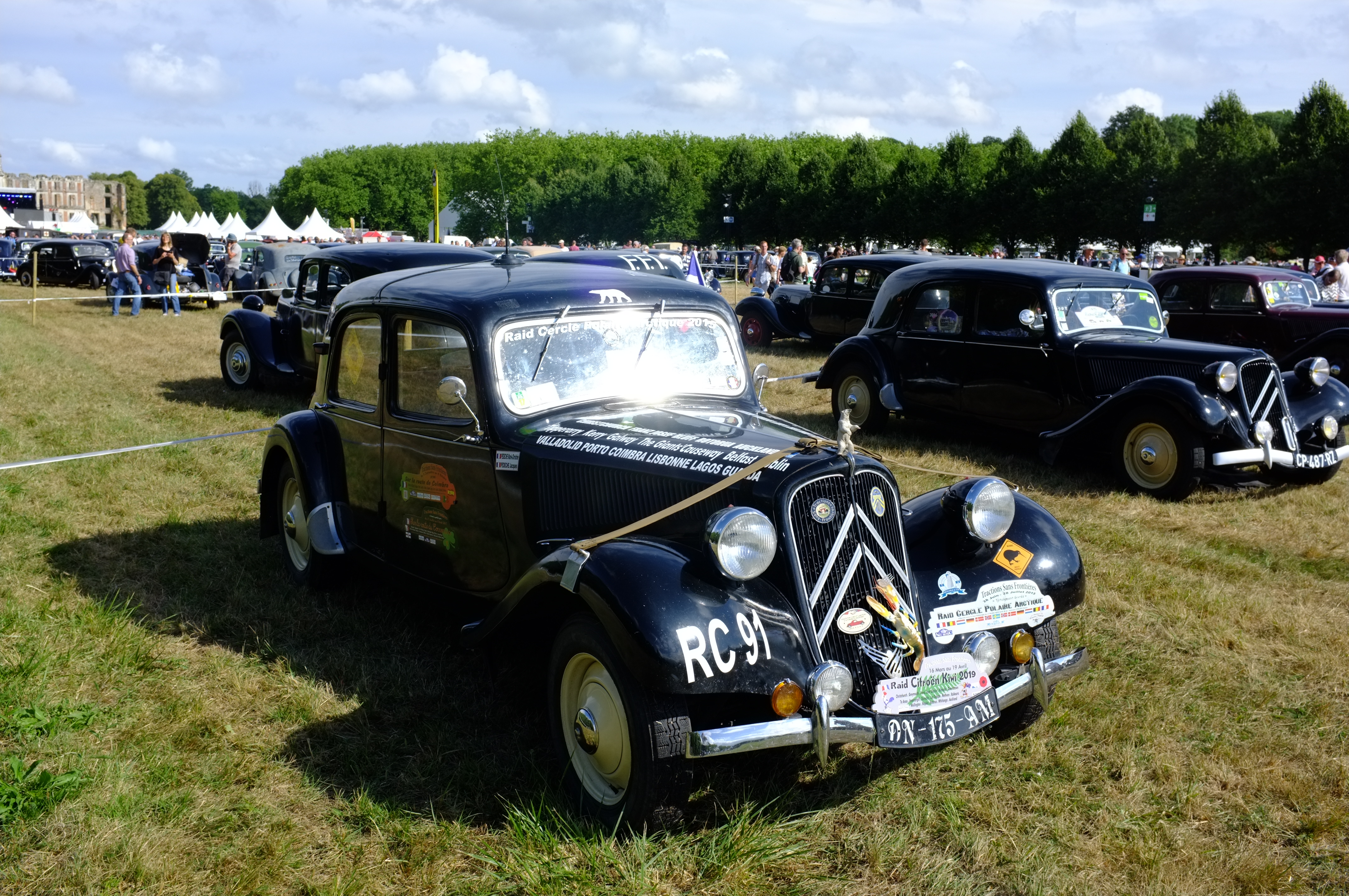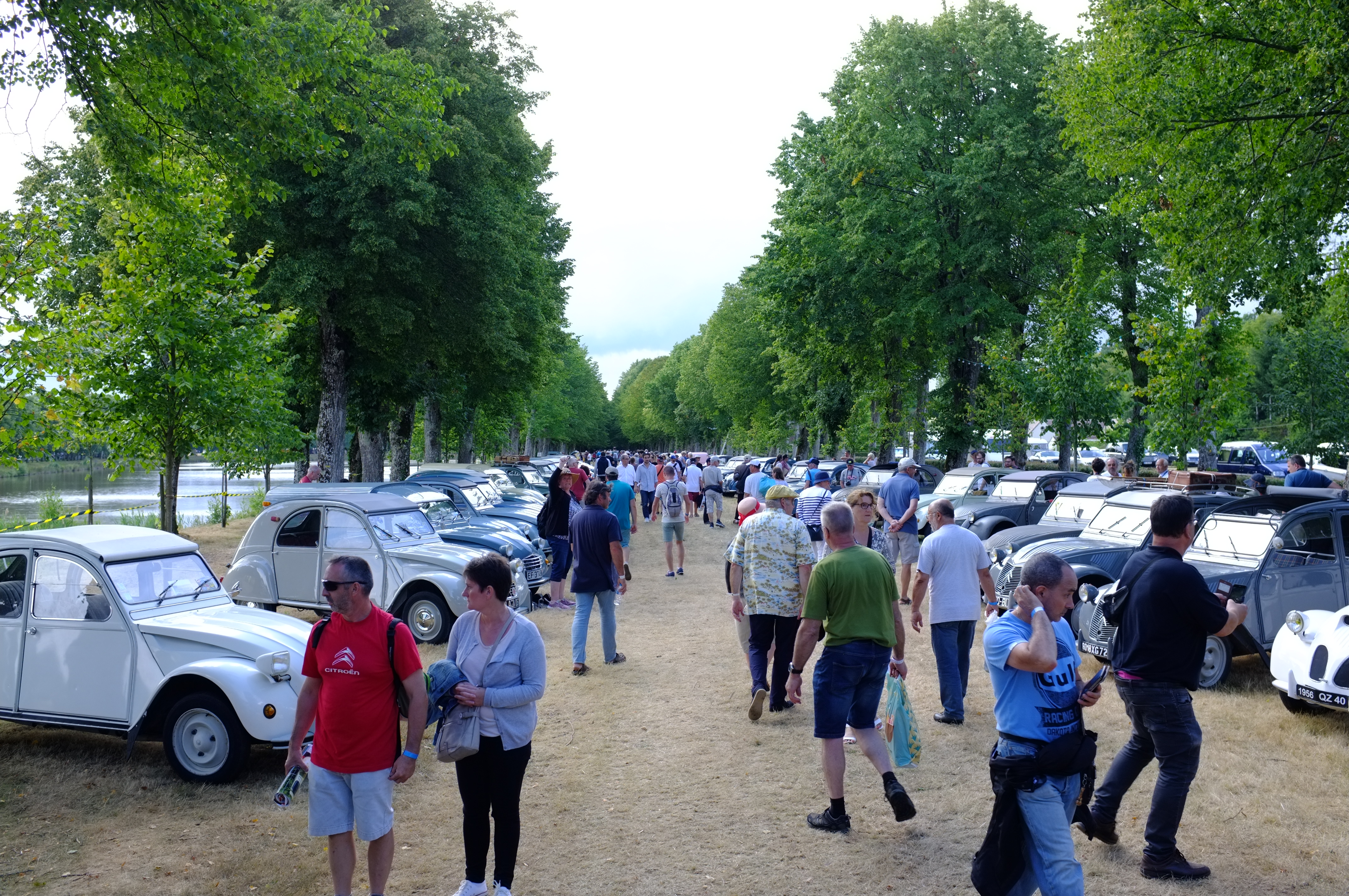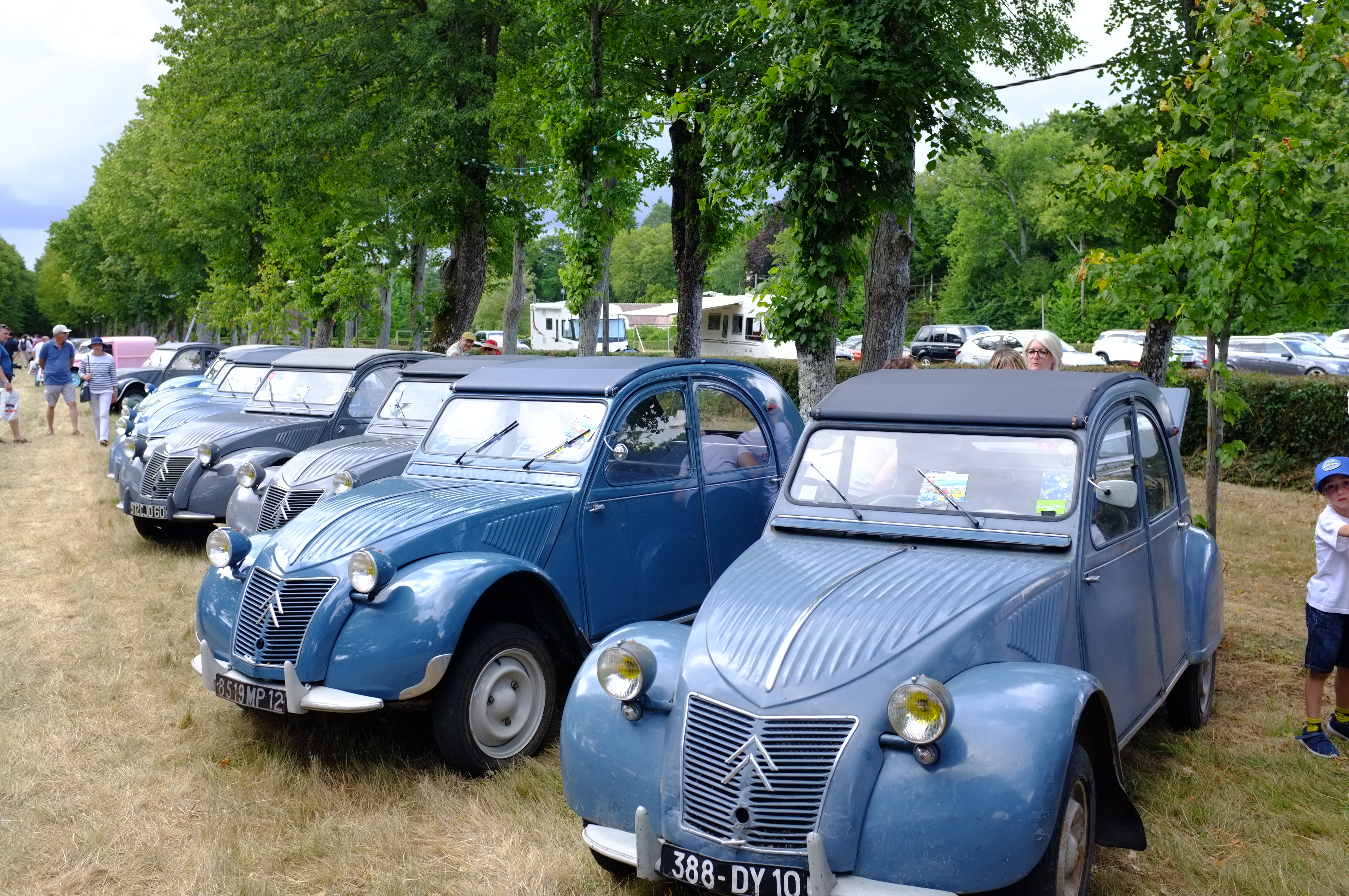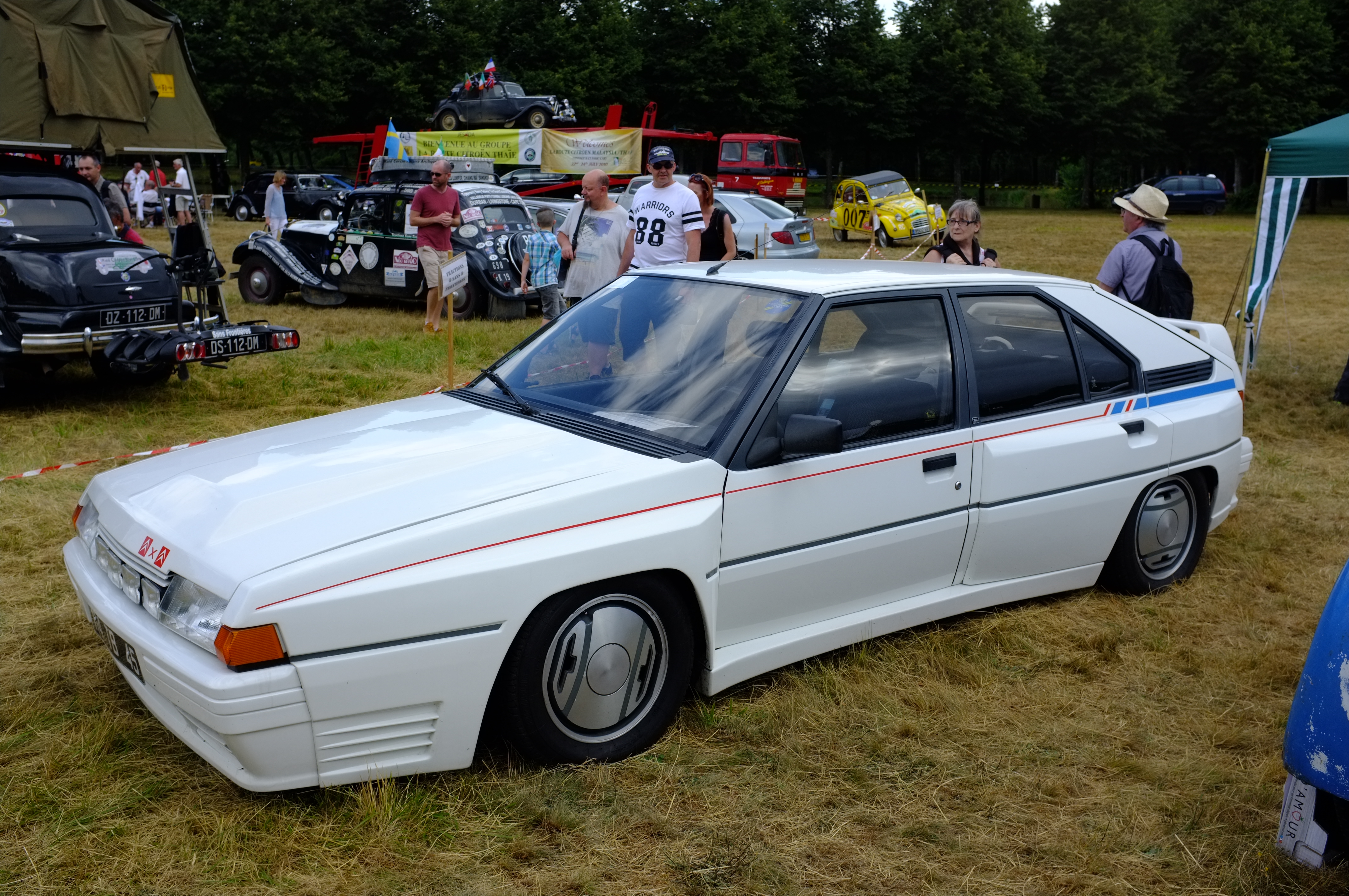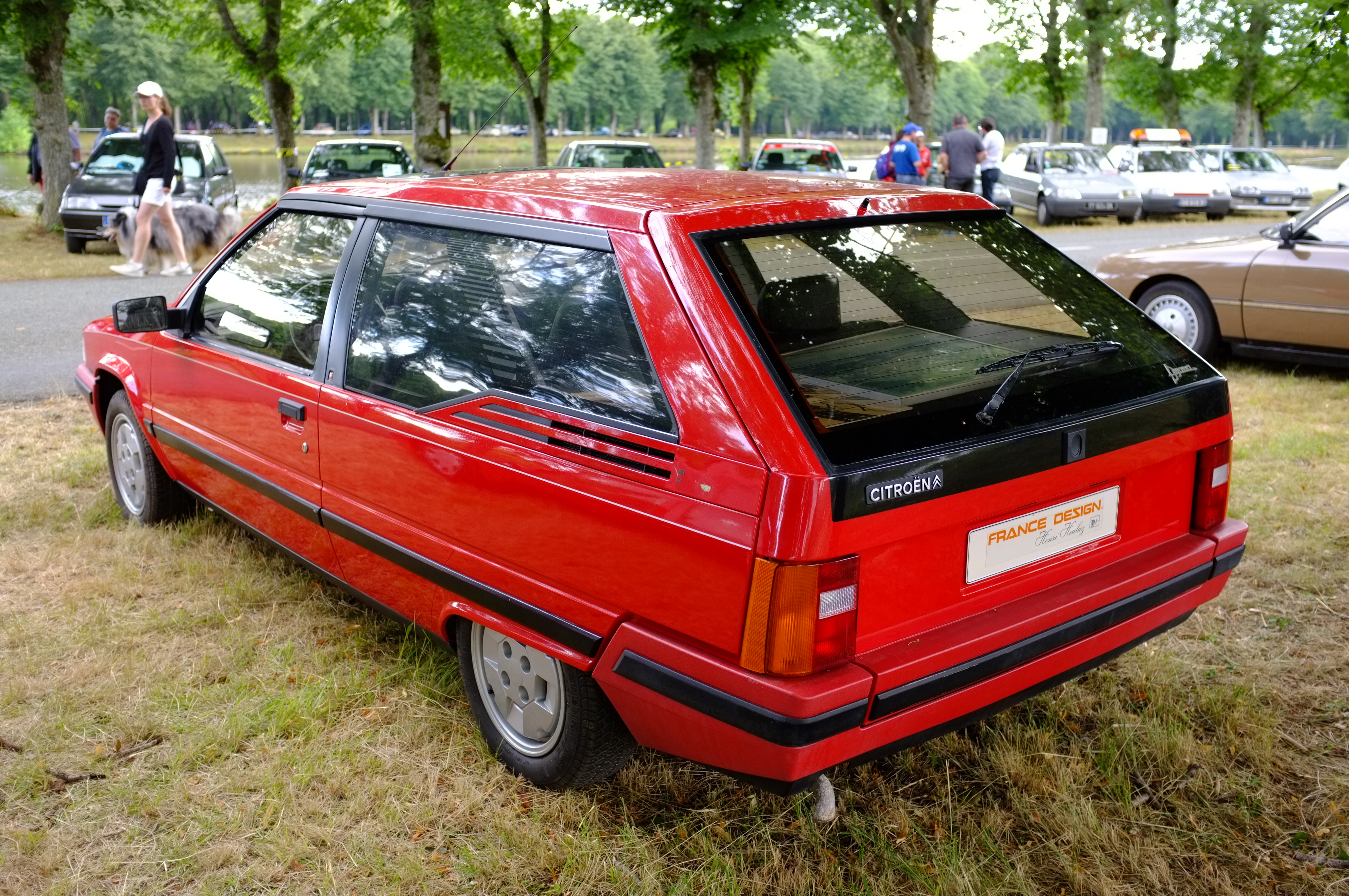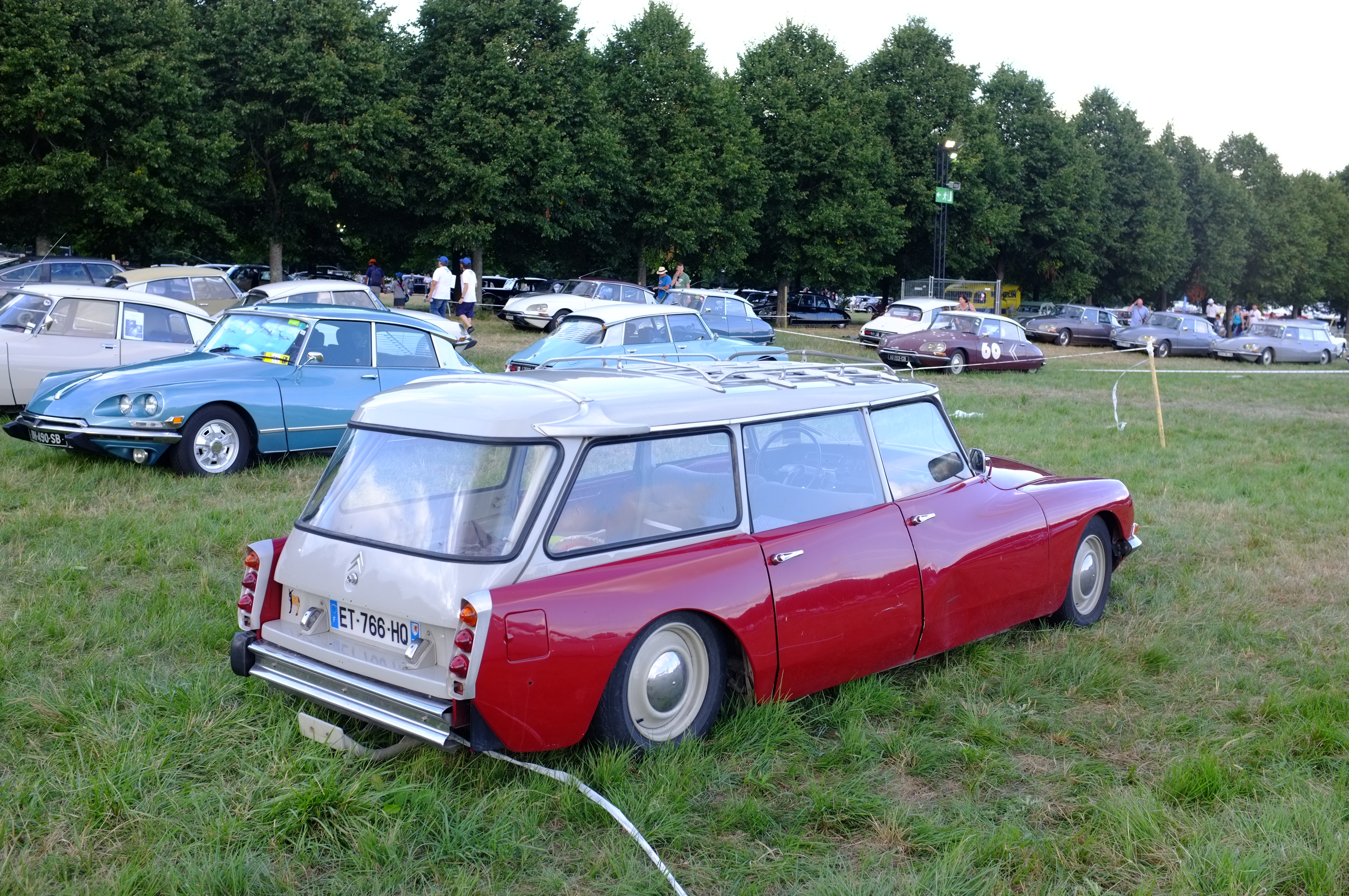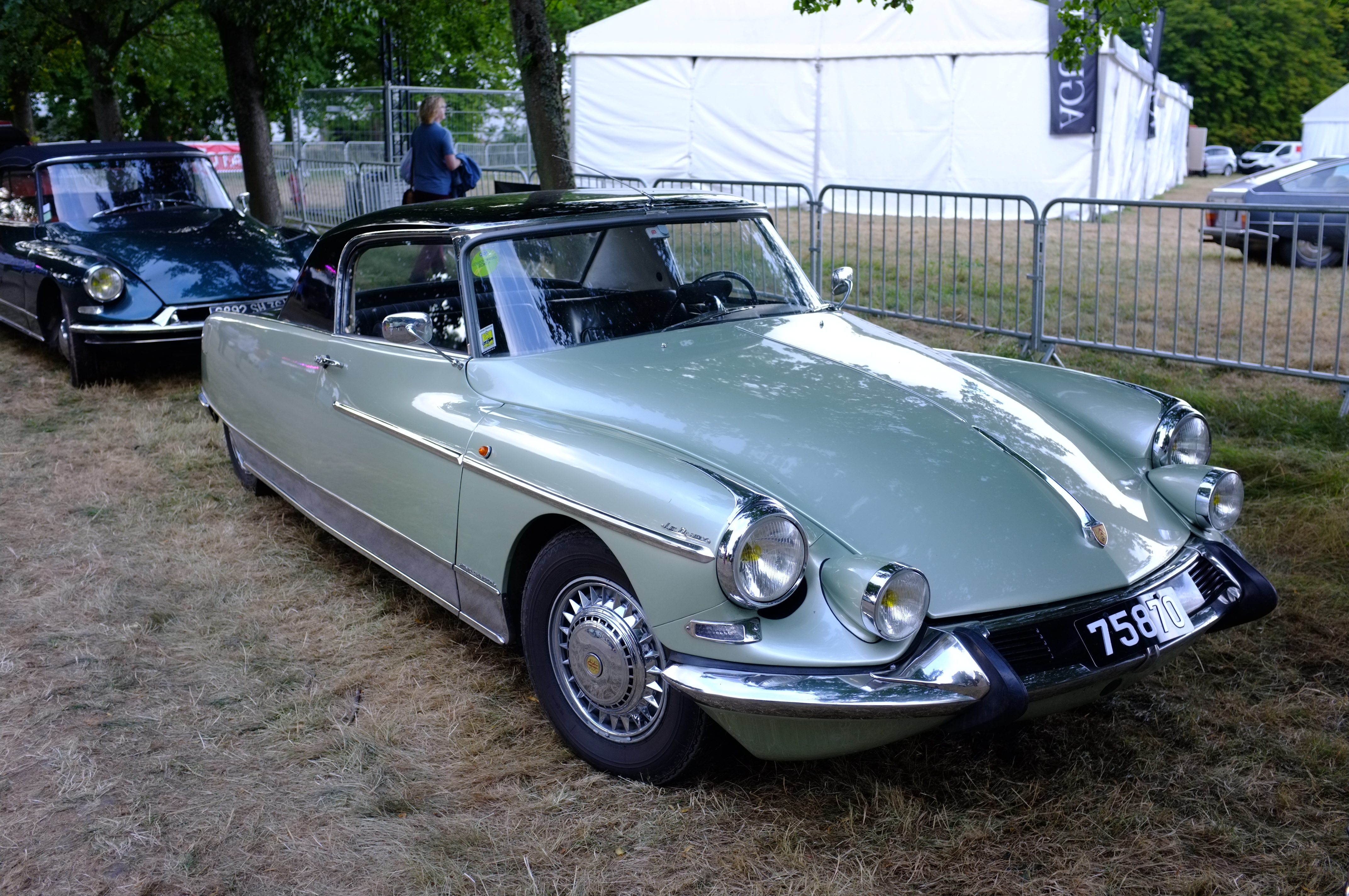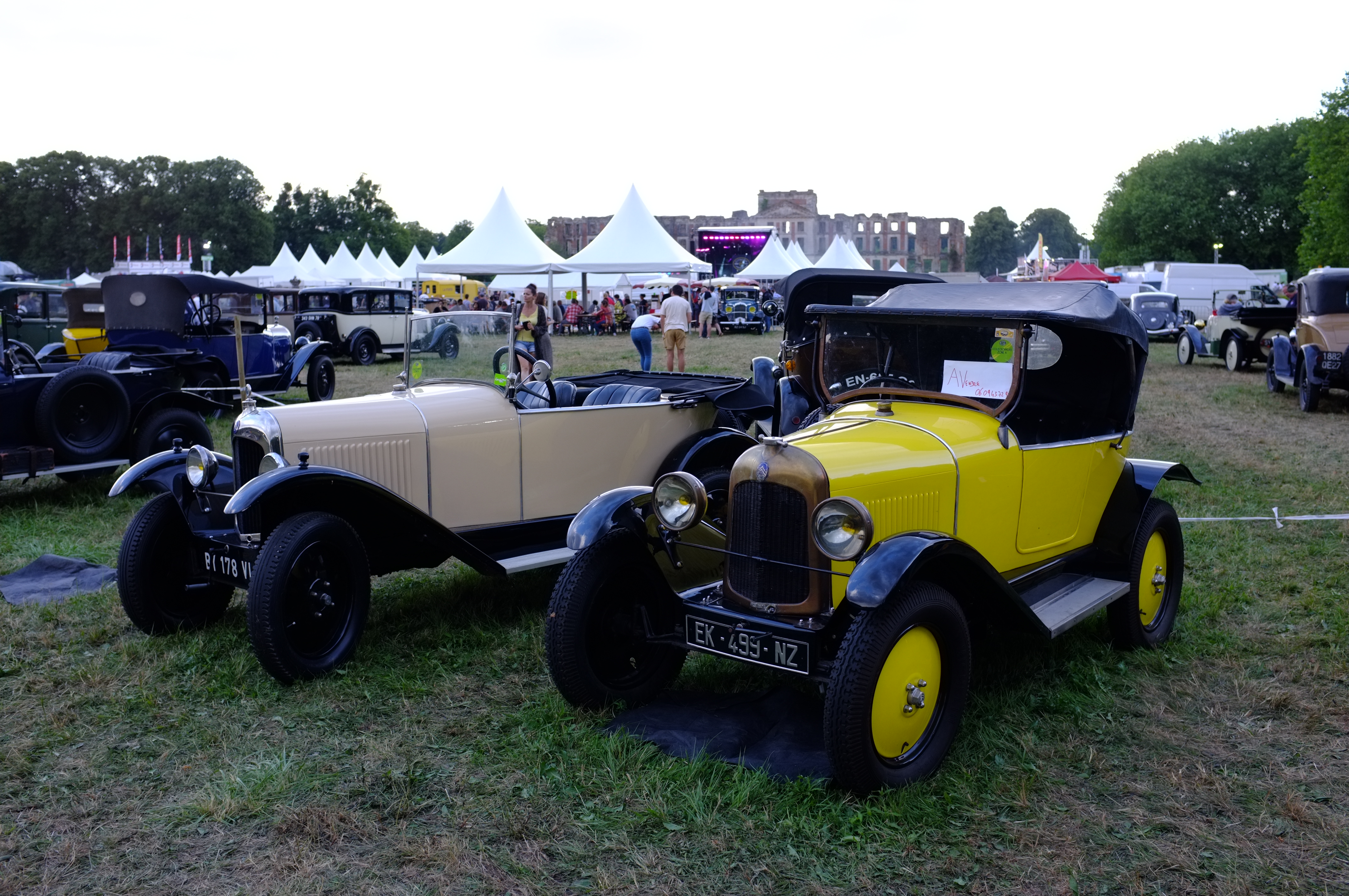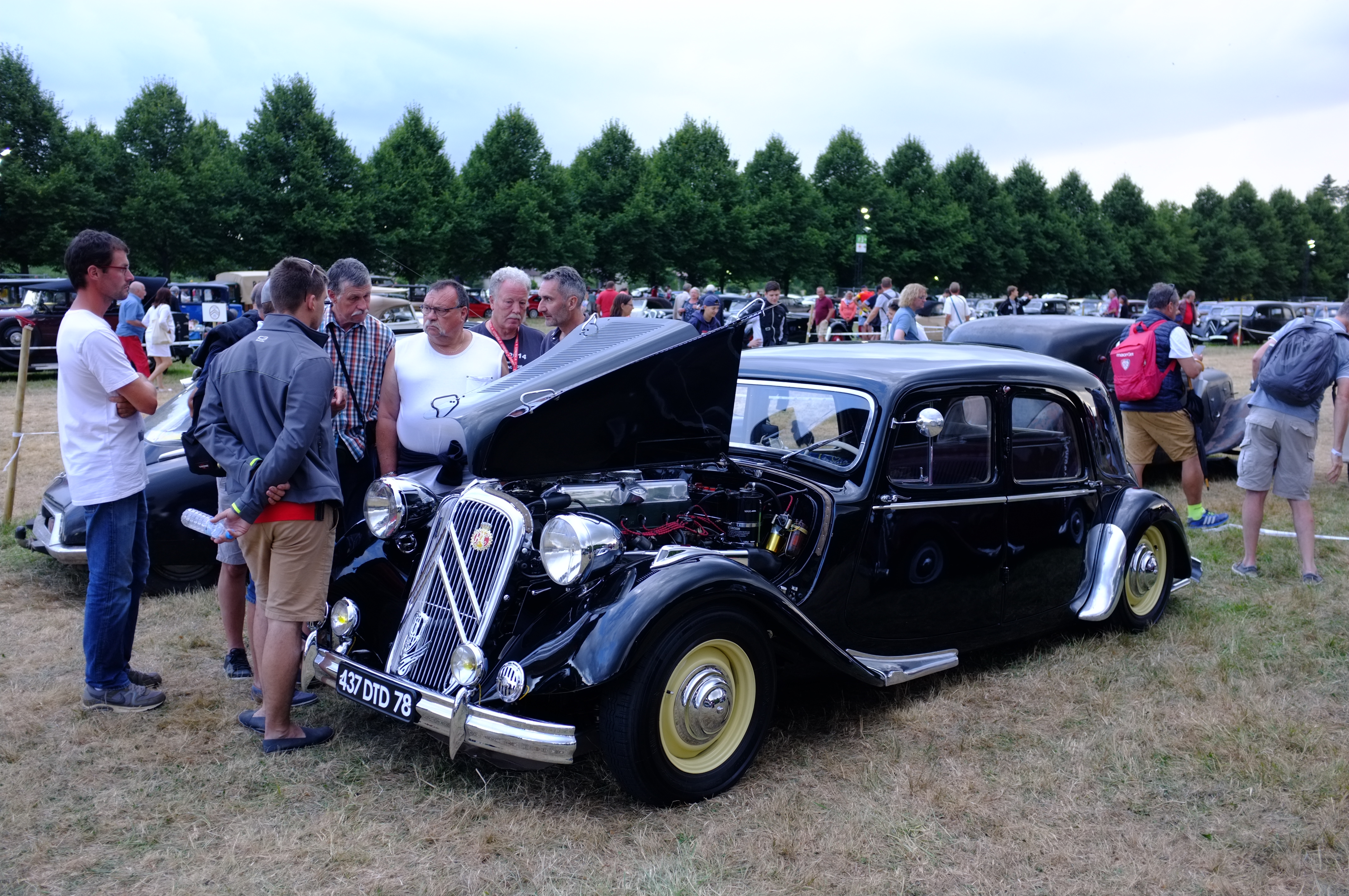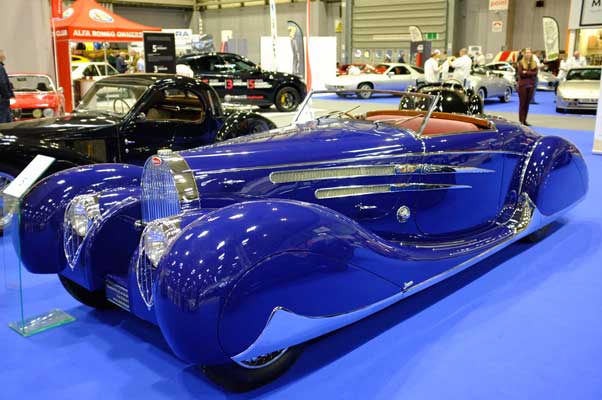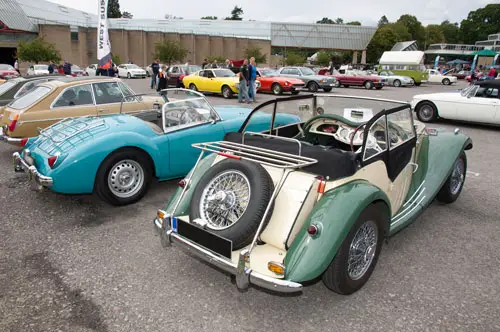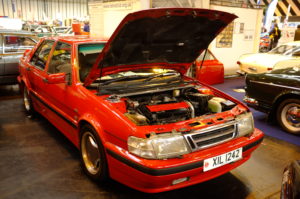Citroën Collections, 1970s & 80s
The Citroën Centenary in France, the big celebration was something I wasn’t going to miss. It will only happen once and I’m unlikely to be able to make the double.
A long weekend was planned based in Évreux, the capital of the Eure region and not too far from the celebration. About an hour traveling through the French countryside isn’t a bad way to start a day like this. The Citroën Centenary was at La Ferté-Vidame, a nice village with a rather stunning but ruined chateau. The whole village had been closed to host the event, with all sorts of vintage traffic making it’s way there. The event, a ticket only affair was hosted in the chateau grounds, there was so much of it it spilled over into the surrounding roads, fields, parkland…
Citroën Centenary Display
Now you would expect Citroën to be there and representing the brand, old and new and they didn’t disappoint. Examples of their collections were in displays and they’d even brought some of their neat new vehicles. The view of the Traction with the roofless chateau behind were rather nice. The layout here with a timeline of vehicles over the century.
The Tecalemit liveried 2CV below was from the Le Mans museum, this car took two French students around the world. The first 2CV to do so and they covered 80,000km doing it. Looking rather unrestored, I’m going to visit it in it’s normal home one day soon.
This safari rally CX was pretty impressive, a 2400 Super which looked like the Senegal rally entry from 1977. The car which finished second and was one of seven finishers out of thirty, five of which were CX’s.
Behind the Paris – Moscow – Beijing winning ZX. Introduced in 1990 this car won the rally in 1992, the first one and the toughest event of it’s kind covering 10,000km. The ZX Rally Raid was hugely successful winning five world titles.
You might have noticed the cars are a little wet, and there is the corner of the rather large and very full Citroën tent, it rained really hard. What is it with Citroën events and rain….Well thankfully it only lasted the morning and really brightened up later.
Citroën Collections, SM and CX
Turning left ahead of the ruins led to the 1970s, then 1990s and 2000s from what I could see. At the front of the large field was the best collection of SMs I have seen. Every colour in both phases were represented spanning the 70 – 75 production. These are stunning cars, build when Maserati was under the ownership of Citroën, so was an obvious source of the SM’s V6 engine. Except that this engine was all new, designed and developed for the SM, it took two more years for it to find it’s way into the Merak.
Hiding behind this collection was an even bigger group of CXs, the silhouette seemingly carried over the tapered slim hipped style of the SM. Launched in 1974 this was a stunning executive saloon car with the hydropneumatic suspension that gave the car not just it’s floating ride, but floating appearance.
The CX had quite an unusual dashboard, behind the single spoke steering wheel there were no stalks to be found, but buttons mounted on pods that were all mounted within reach without the need to take your hands off the wheel. Citroën were often accused of producing ergonomically questionable interiors, but maybe those making those statements hadn’t understood it. Ok, the central rotating drum speedometer is unusual, but rather fantastic. Of course, replaced by conventional instruments in later versions.
Citroën Collections, CX Tissier
There were some rather long versions too… Produced by French company Tissier, they made six wheel Loadrunners, predominately for carrying French newspapers across the country at high speed. Literally hot off the press. These things would have to cover large distances overnight to make sure the papers arrived in time to be delivered, this may have involved breaking the speed limit. I wonder if any of them ever got stopped on the Autoroutes.
This camper conversion had a Loadrunner model on the dash too, I would consider moving into one. There’s something quite stunning about them.
It’s not the longest one either…
The CX transporter was more common than you think. Pierre Tissier converted many CX, DS and one SM. His Loadrunners, Ambulances and Autotransporter above.
Citroën Collections, XM
From the swooping curves of the CX to it’s XM replacement in 1989, a more angular take on the concept. Again in saloon and estate formats, this was equally spectacular as the car before it. This particular example was believed to be one of the earliest cars having had quite a lot spent on it. I love those wheel trims.
Moving to the other side of the chateau remains there was a stage with live performances, food and drink and some rather nice displays.
Citroën Collections, Rarities & Specials
First up were the M35 and the GS Bi-Rotor. A rather unusual experiment to power Citroëns with Wankel rotary power. Back in the sixties and seventies, car manufacturers toyed with the idea of using alternatives to the conventional piston engines. The M35 was a coupe based on the Ami 8 platform and had a single rotor Wankel engine and was a prototype built by Citroën to see what potential customers would think. The M35 was produced in 1969 but only 267 were made for selected customers. Most of these were recalled and scrapped, rather than maintain what turned out to be an expensive fleet to maintain.
The Bi-Rotor in the GS is more what we are used to thanks to NSU as they provided the engine. This was a fantastic prospect with 109bhp and unfortunately a very high price. Citroën attempted to buy them all back so they didn’t have to provide spares for them.
Hidden inside a tent, there was a collection, of very rear and unusual vehicles including a Motorcycle with the GS flat four engine. But the DS Decapotable was stunning, but I was rather taken with the very basic and very yellow BX. It’s a striking looking car especially in it’s original form, and not something you see so much of in the UK anymore, which is a shame as these are excellent cars.
With almost matching colour schemes the 2CV Cocorico and the Visa Chrono. The Cocorico was built to celebrate France’s participation in the 13th FIFA world cup held in Mexico in 1986. The Chrono was built as a designed as a civilised version of the Visa Trophée, the Group B homologated production car of the rally entry. Made for France only they built 1000 of them in total, but I think there are a few clones from what I have seen.
Of course, the prototype 2CVs were there to make an appearance, quite rightly so, the importance of these to the company is huge. I’m lucky enough to have seen these in a few places now, you may remember them from other show reports.
This somewhat sinister looking car is a one off presidential designed by Philippe Charbonneaux and was based on a Traction Avant 15/6. Known as the Franay, it was built in 1955 and had a habit of overheating when moving at walking pace. It was modified to correct this fault of course. But, it is quite different to anything Citroën had or would produce. I rather liked it, pity it’s unique.
Citroën Collections, Rally Raid
Back outside I found some of the short wheelbase rally raid cars, in both SM and DS varints. The SM ‘breadvan’ was commissioned after Citroën won the Rally du Maroc in 1971. It’s an obvious choice really, with hindsight, due to it’s sophisticated suspension for coping with the rough terrain and the decent turn of speed offered. Both at the same time usually. So the short wheelbase version was created, a bit like what Audi later did with its Quattro to make the Sport Quattro. This made sense to Citroën as they developed the SM from the short wheel base DS, which was already well proven in the rally scene. They made several of these apparently and I’ve been lucky enough to find some of them.
The SWB DS was obviously the starting point for the idea behind the SWB SM. Whilst the DS was an incredibly successful rally car, it didn’t have the powerplant options that the SM did. The additional performance offered was a significantly higher. Even without more than a 4cyl engine based on that in the Traction the DS was very successful, even in long wheel base variants. Monte Carlo rally and the London – Sahara – Munich World Cup, a rather gruelling events.
Citroën Collections, Customisation
I don’t normally like doing this to old cars, but this 1954 Traction was fantastic. The build came from somewhere between the 1980s and 2007 and built to be a homage to Citroën and their partnership between Yacco the oil company which was famous for their production of ‘Oil of Records’. Citroën built a few record breaking cars with Yacco liveries, you could almost imagine them having done this. It is spectacular, the sand racer or or hot rod look suits the car. The helicopter sourced seats inside are fantastic, although not sure how comfortable they are…
This rust covered ripple bonnet van was also impressive. Lowered with larger wheels it seemed to suit the appearance. The front opening doors lasted until 1964, this had a ripple bonnet so was probably up to 1960. Known as the AZU, this combined the ripple bonnet with the somewhat crude corrugated steel back end.
I had to include this, a Citroën Relay transporter with an H Type style bodykit. This was designed to celebrate the 70th anniversary of the H Type and can be fitted to the latest generation of Vans. I think it looked rather good, I’d certainly want to do that to mine if I had one. I think the kit was fairly expensive, but it looks this good. Well, I like it.
Citroën Collections, Bijou
Now here is a little rarity, a Citroën Bijou, or jewel in English. A right hand drive and very rare Citroën. This was built in Slough for the UK market and was based on the 2CV but featured a fibreglass body to appear to customers of more traditional UK cars. They only made 207 of them and they are absolutely stunning. They also draw a crowd, it was difficult to get a picture of it.
Citroën Collections, Traction Avant
A little bit beyond the lovely little Bijou was quite an expansive field full of pre-war Citroën, the likes I admit to not being that knowledgeable about, yet, but also one of my favourite cars, the Traction Avant.
There were hundreds of them, some were being driven about on parades and were coming and going, but there were many displays with every variation represented. The French Resistance traction below was looking rather nice in a dark shade of blue, unlike the more common and equally nice black they come in. But note, the additional side window to the rear, this was a long wheelbase version, a Familiale. These pre-war people carriers could accommodate up to nine adults, a folding row of seats that were in the middle of the car could hold the additional three people. What was surprising was the amount of these, in France they must have sold many more of them than I had realised. The extra long wheelbase and wide body made these care quite imposing.
There were plenty of Normale versions as well as the Legere, or the light 15 as it was known in the UK. This could be distinguished by it’s narrower body, there really is quite a size difference.
Looking back you can see the size of the field that they occupied.
Citroën Collections, 2CV & Dyane
But that wasn’t it, where was the field of DS and 2CV? Stepping outside the chateau grounds long lines of cars could be found. You can’t see the end of this line of 2CV from where the picture was takes. Every variety was represented, probably. I admit to being somewhat overwhelmed by the volume of vehicles and simply couldn’t look at each car. It would have take days. It just goes to show how much support for Citroën there is in their Centenary.
The quality of what was on display was superb. These were enthusiast cars and many beautifully turned out examples were presented. The early AZ ripple bonnet cars towards the start of the row were lovely. A few nice colour examples too, not all of them were the more common grey.
Citroën Collections, BX Group B
After the 2CV overload we moved on to the BX and came across the BX 4 TC. Built to homologate the Group B entrant, this BX lookalike had a turbocharged four cylinder 2141.5cc engine. Mounted longitudinally with a variantion on the SM gearbox bolted to it. With no centre diff and four wheel rive the two ends fought with each other on tarmac resulting in rather spectacular driving styles. It was easier to manage on the loose surfaces.
However, this arrangement gave the car a rather large nose, essentially they followed Audi’s blueprint for building a rally car. Take a road car and modify it. This was quite a modification ,the engine being the wrong way round for a start, at least Audi had theirs like this to start with.
The car was a monocoque design and full of PSA group parts bin finds. Built on a much lower budget than the later spaceframed offerings it was well overweight and underpowered. But it looked great and all that Group B should be. The road car was narrower bodied and was detuned to 200bhp. It still looks absolutely fantastic, big nose or not.
Citroën Collections, Visa & BX
Another favourite of mine was the Visa, a comical little car based on the Peugeot 104 with Citroën’s rotating drum speedometer and all switches on a pod dashboard. Not to mention they also came with a 652cc flat twin engine and very soft suspension resulting in ludicrous body roll and a great ride. Fantastic, and I really mean it. The first platform sharing of Peugeot and Citroën, something which continues to this day. Mk 1 and 2 cars can bee seen next to each other, the early one devoid of any side body mouldings and the smaller front grill that extends to enclose the headlights on the later car.
Now here is something you don’t see every day, a BX Dyna by Hueliez. They built the panel side Service van and this, well, three door estate. It looks fabulous, why can’t we have more three door estates? If you look closely you can see where the rear doors are and hoe they have cleverly disguised the pillars behind the glass. You could get these in the UK, but they are not a common sight. The red colour is the same as the brochures, this car looking like it was the one. I would like one, they look even better than they can do in the pictures. The BX was a nice looking car, in an angular way, the Hueliez versions bringing out the best of the shape, which doesn’t always happen with practical conversions based on regular cars.
This BX also caught my attention, the most basic of all the BX14. The smallest engine with no additional extras, you could say the car in its purest form and the shape is all the better for it. In perfect condition too this one stood out from a wonderful collection of 4x4s, GTI’s and other higher end models. My American friend who was with me for this visit had decided that out of all the cars here, he would want a BX. not something that was ever sold in the US. Good choice I have to say.
Citroën Collections, Mehari
There were quite a few Meharis too, the rain earlier had seen many assemble the roof, this is a job that takes half an hour apparently. The frame underneath a lot of canvas panels slots into various parts around the body, doesn’t keep all the water out either by all accounts. I’d not seen a one piece hard top before, looks like it makes the Mehari almost practical.
Citroën Collections, DS
There were a few bizzare things happening, he assemble the 2Cv from parts in what seems like minutes then drive off, to take all the body parts off your DS, pile then up including all your luggage and drive around the site.
Moving back into the grounds the DS collection was quite extensive, there really were some stunning examples. What was also surprising was that whilst walking through the display many of the cars were moving around to go on procession and they were extremely quiet. Moving slowly around the engines were barely audible, I’ve heard modern cars making far more noise. They were rather graceful floating along the uneven grass surface.
DS Safari’s aren’t that common a sight in the UK, but there were a fair few of them. This is a typical cavernous estate car from Citroën, the replacement CX was the same. Vast amounts of passenger space too, and of course a Familiale version with a folding set of middle seats. They are known as Breaks in France, Wagons in the US and in the UK the Safari.
Thanks to the 1960s being quite a vibrant time, the cars were available some brilliant colours. But, when launched in 1955 there were bright colours too, a move away from post war austerity with what was a much more expensive car than the Traction Avant it replaced by some 60%. The ID, a less luxurious version with less power was made available to help.
Earlier 1950s cars had unfaired headlights and no side mouldings to the body. These first versions were extremely pretty and whilst the later cars are still, this purer form of the shape is evident. Note the different colour roof, something which is now fashionable with certain manufacturers, you probably saw it here first.
Now I come across the Henri Chapron bodied cars occasionally and whilst they are spectacular they are quite varied. Henri produced quite a few variants over the time and some of them evolved over time too. This one is a Le Dandy, produced between 1960 and 1972, was quite a long running model and whilst a model as such could be built to suit who bought it. A pair were produced with a higher roof for example. This was essentially a hard top coupe version of the Le Caddy, a convertible model that was available with optional hard top.
Citroën Collections, Early Citroën, 5hp To C6 Rosalie
And the last part of the show was the section with the earliest cars, which not surprisingly was the smallest of the collections. After all, cars were very expensive and not everyone could afford them.
Citroën’s second model launched was the little 5hp in 1922. We later saw the yellow one being towed on a trailer behind what seemed like an enormous Audi Q7. I guess cars really were smaller back then, but they were also much slower and it may well have travelled quite a distance so was probably a good idea.
The larger car below was what I think is a C4 or AC4, built from 1928, note the external hinges and the square corners of the door tops. Back then they hadn’t advanced to making internally hinged doors with rounder profiles. It was only a few more years after this. There was also a C6 variant, a larger car with a six cylinder engine. Still not a fast machine, but we are still talking about the relatively early days of motoring.
Finally, I couldn’t not include this ‘Big 6’ traction Avant. Powered by a straight 6 engine, this later Traction featured the advanced suspension that was fitted to the DS. It was kind of a test, so no the rear suspension hasn’t collapsed, it was only fitted at the back. Big bodied, big engine and if you can find one a bigger price than a more common 4cyl car.
There is a full gallery from the Citroën Centenary on the Facebook Page as always, click here to see it.
Simon
